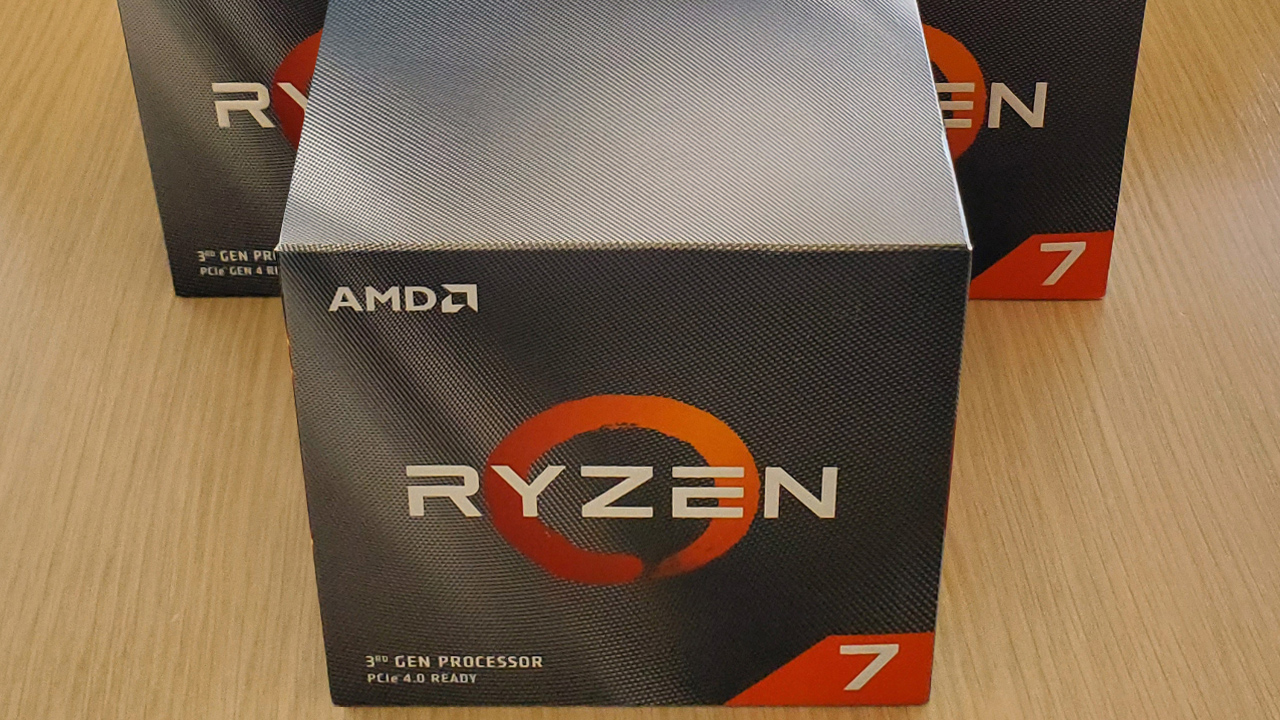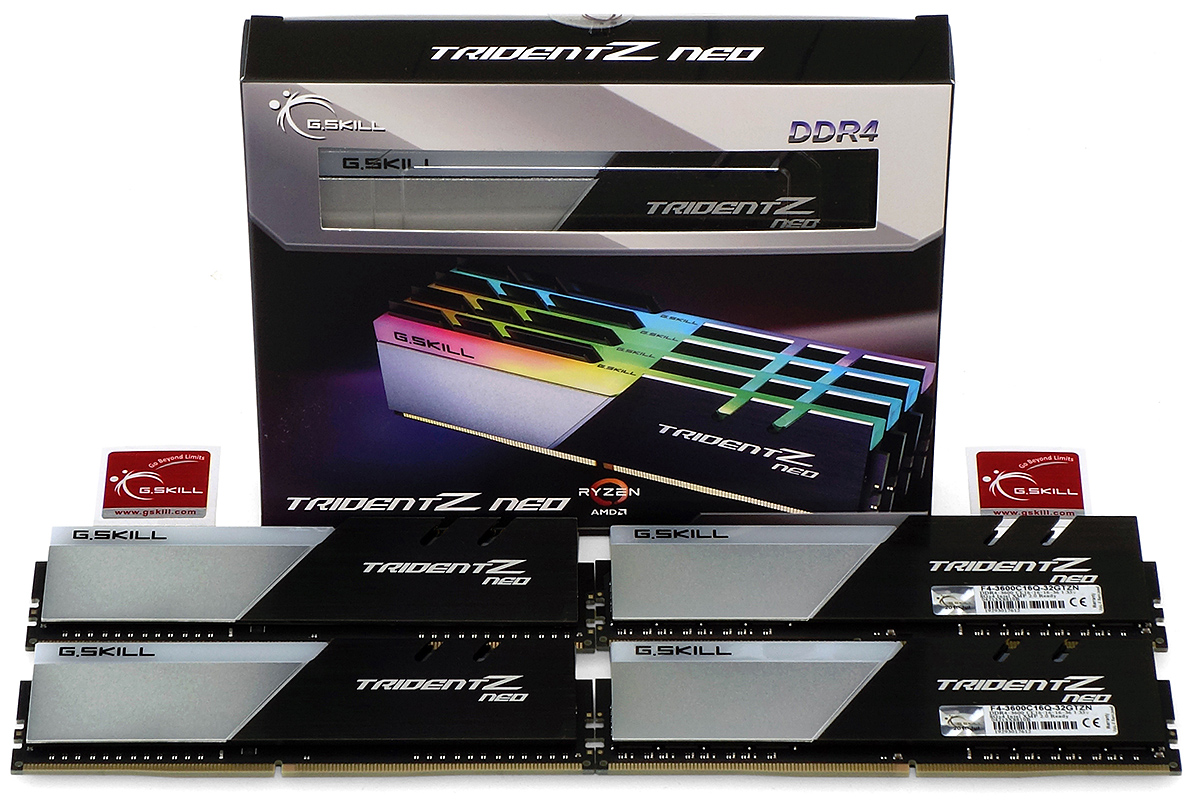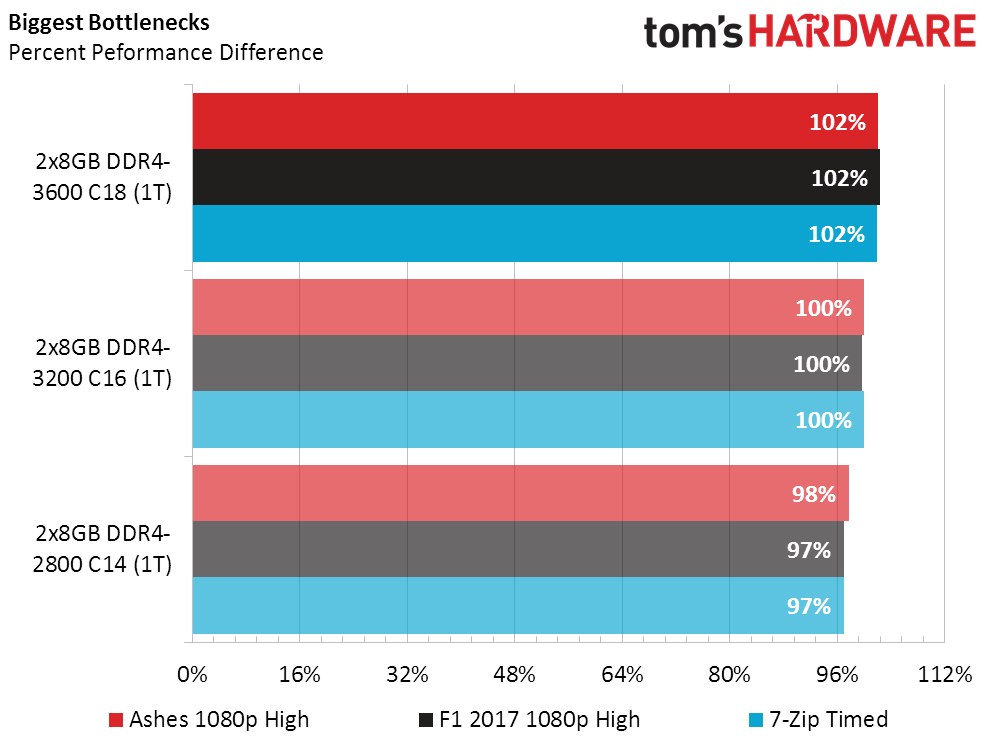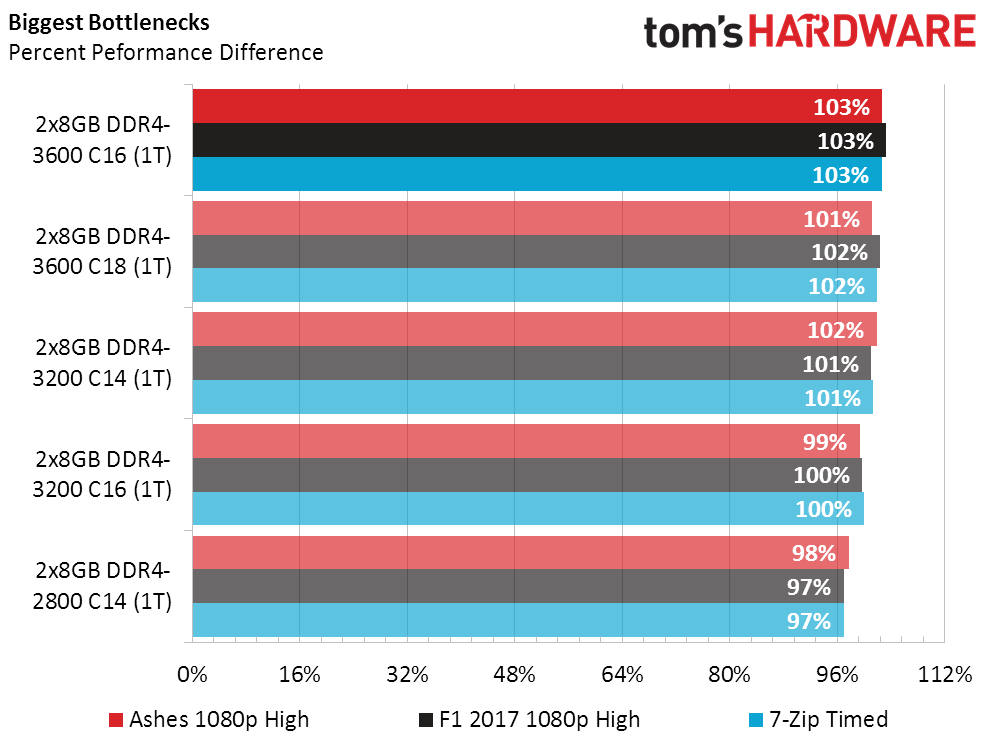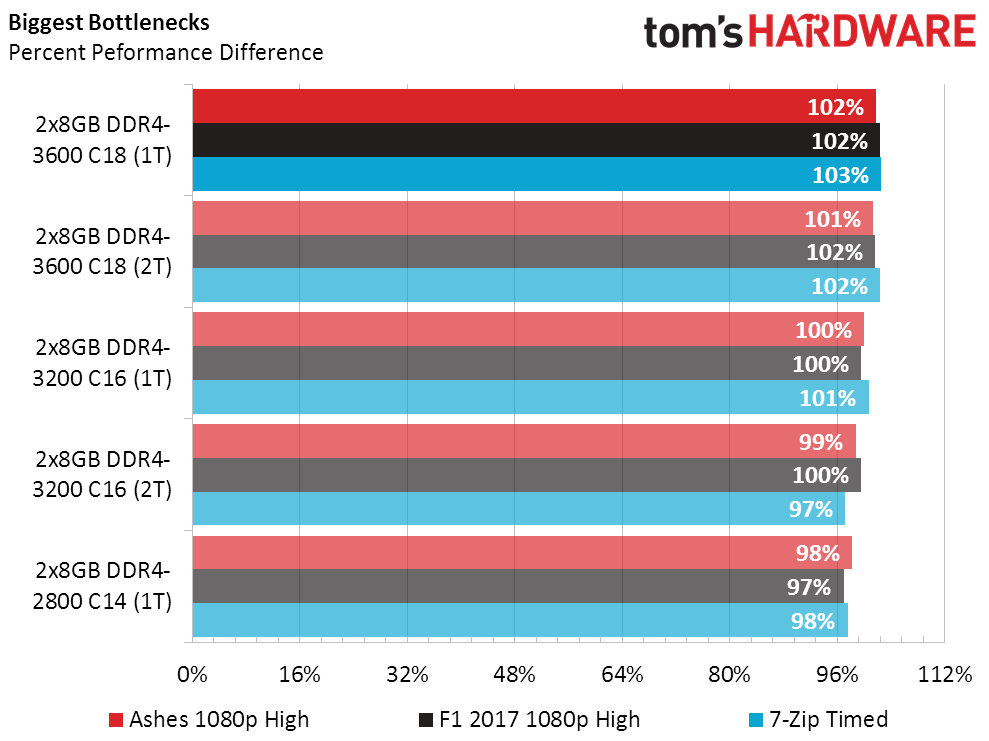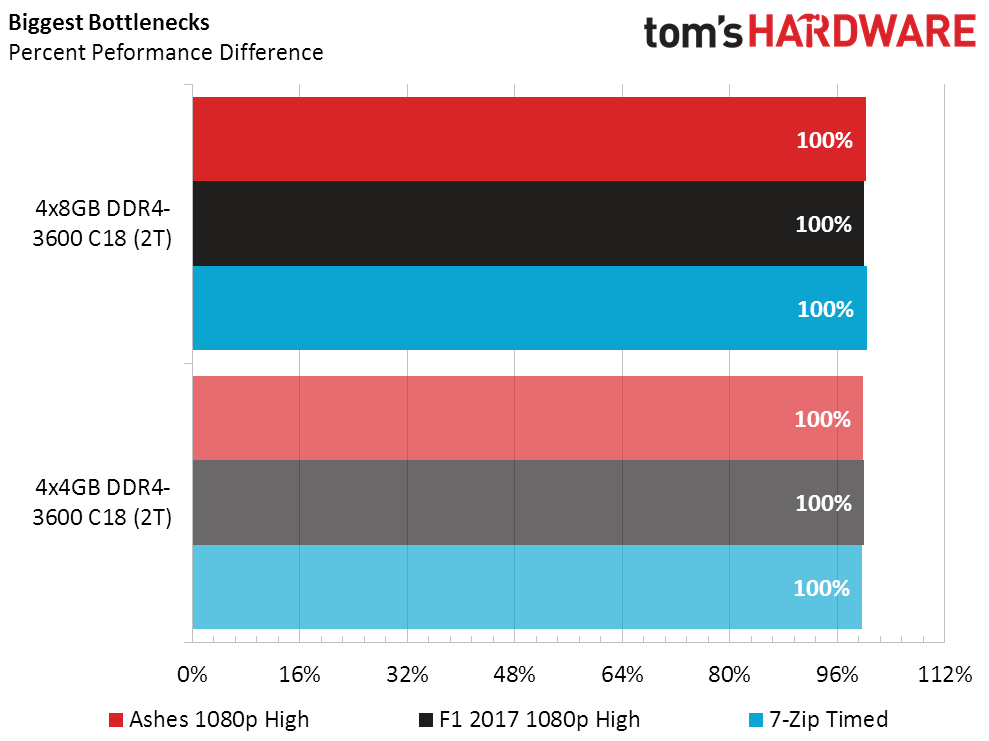Ryzen Above: Best Memory Settings for AMD's 3000 CPUs, Tested
AMD set the memory spec for Ryzen 3000 at DDR4-3200. But any reviewer or enthusiast worth their salt is going to settle for the base spec, because we know there’s always more to the story. While the base line might be what the company recommends, there's certainly more performance to be attained with the right kit, especially when many motherboards boast supported speeds well above 4,000 MHz.
And of course, performance is about much more than just frequency. Several of our readers for example have stated that DDR4-3200 CAS 14 and DDR4-3600 CAS16 are approximate equals, but that just sounds like another generalized rule. How much truth is behind these claims, and how much farther can an average performance PC builder push their performance by tweaking timings and settings?
Rather than drill down to find the best frequency and timings that one kit can muster (we have reviews for that), we’re going to push a dozen or so of the most common “performance optimized” configurations in order to find out when (and why) you might want to choose a faster kit for your AMD build. G.Skill’s part number F4-3600C16Q-32GTZN Triden Z Neo DDR4-3600 has the proven stability we need to test across a broad range of settings. Other components, including MSI’s MEG X570 Ace motherboard and Gigabyte’s RTX 270 Gaming OC 8G are carried over from that memory review, along with our chosen 4.20 GHz fixed frequency for AMD’s Ryzen 7 3700X.
Frequency: Is DDR4-3200 Really Optimal?
Why you can trust Tom's Hardware
When AMD says that Ryzen 3000 is DDR4-3200 optimized, one might expect that anything less will result in noticeable performance losses and that anything more will produce minuscule gains. Our first response is “prove it.” To focus solely upon data rate means we must minimize the impact of different latency settings in this test, but we’ll get back to that in our next section.
Our attempts to keep latency constant in our first test define the frequencies we’ll use in other tests. Latency is measured in cycles, cycle time is the inverse of frequency, so that both DDR4-3600 CAS 18 and DDR4-2800 CAS 14 have the same ten nanoseconds of real-time latency as DDR4-3200 CAS 16. Though we prefer to set our memory in multiples of 266.667 MHz, none within this range would serve the same matched-latency function.
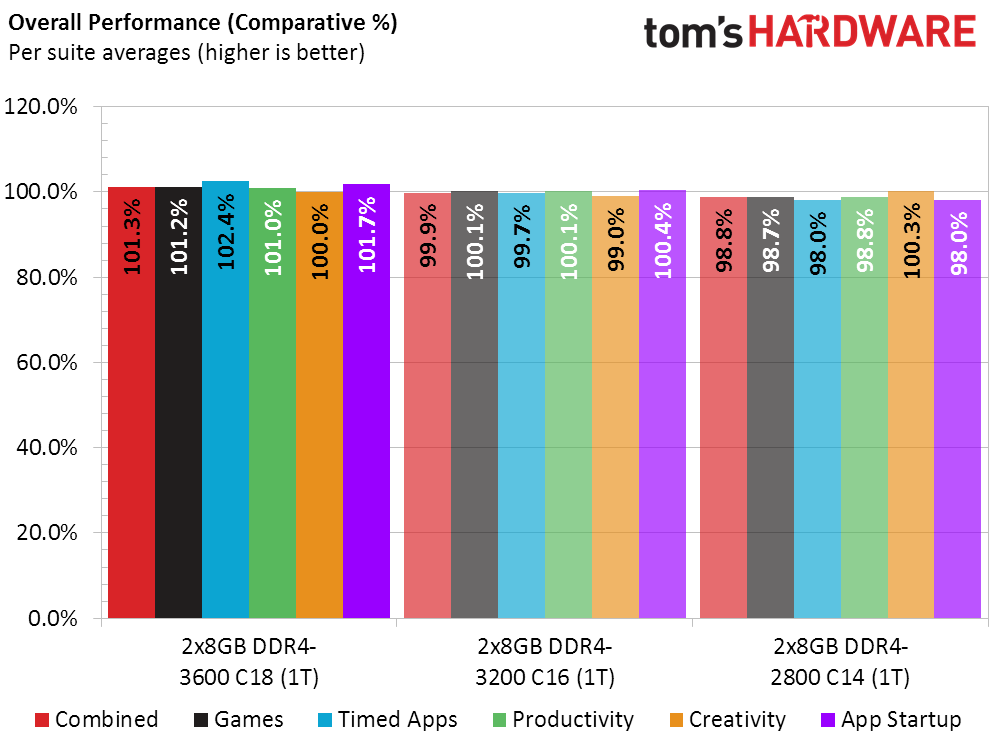
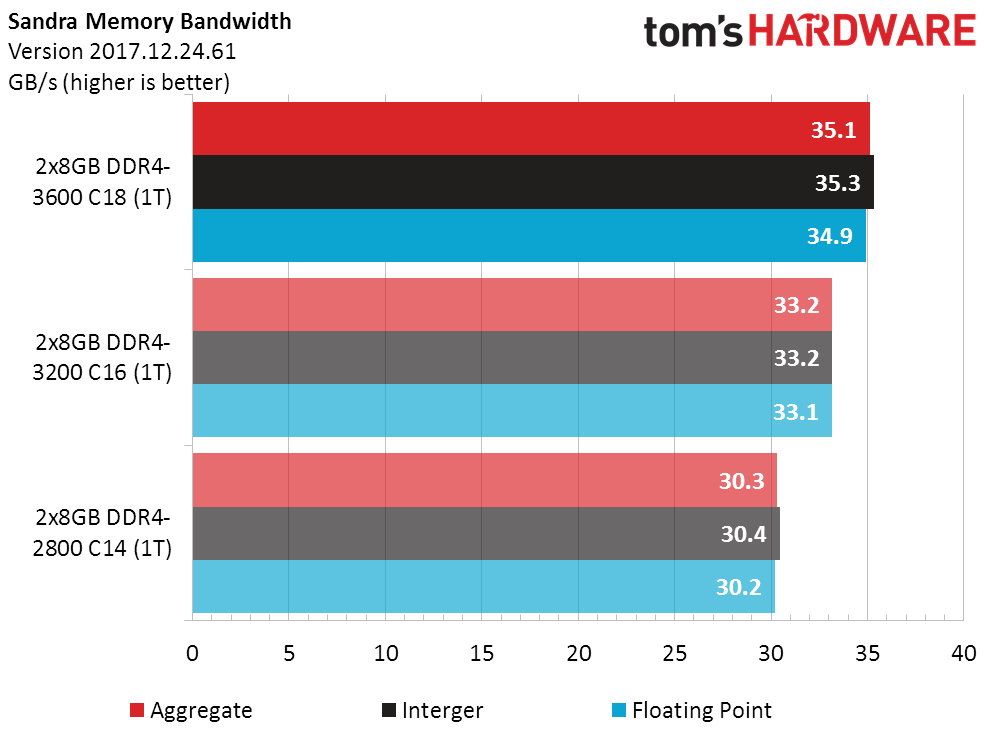
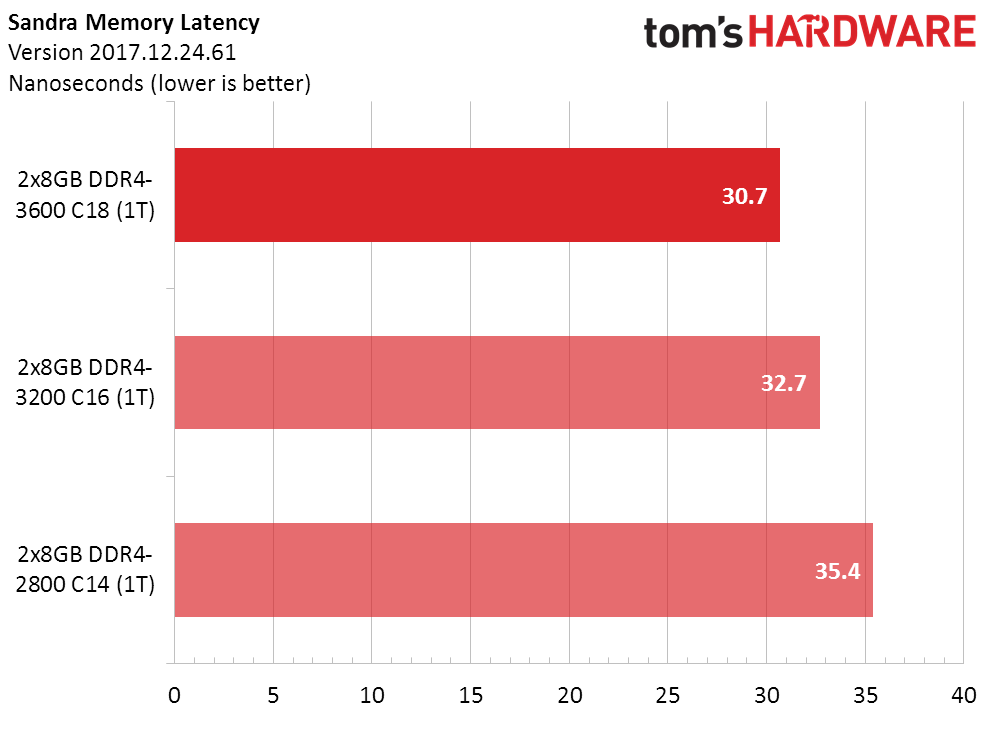
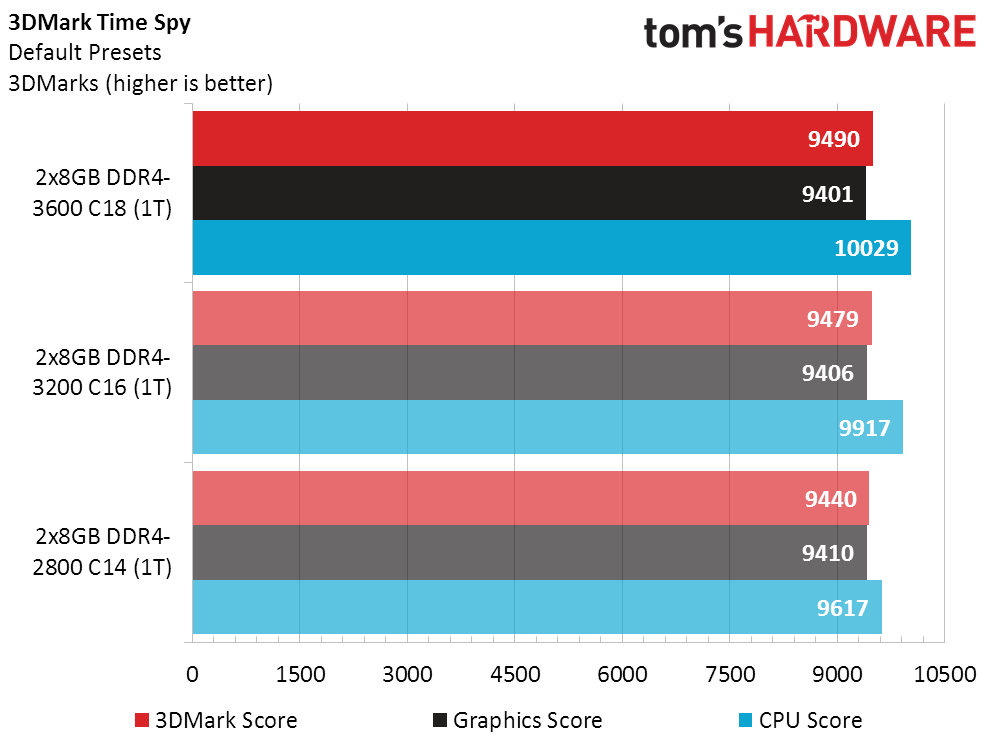
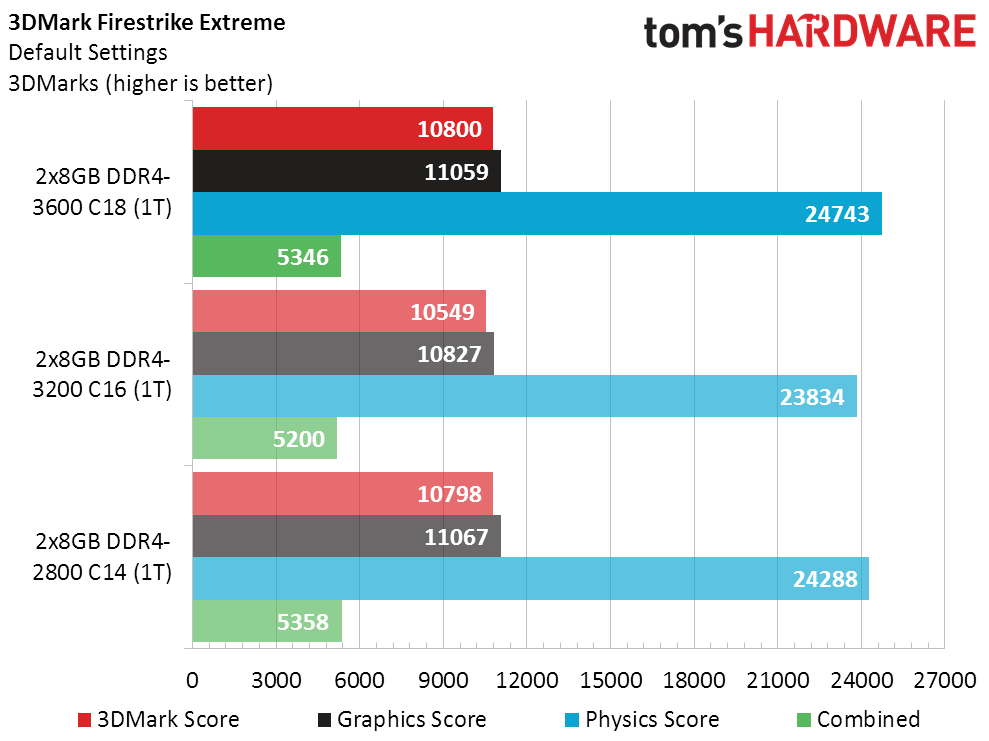
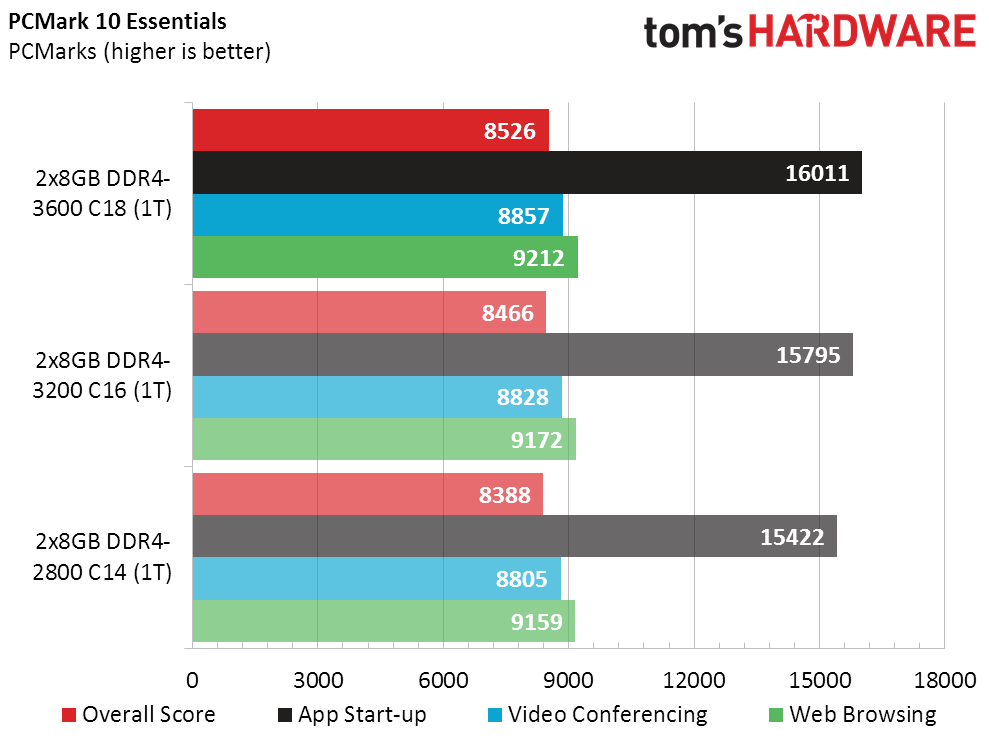
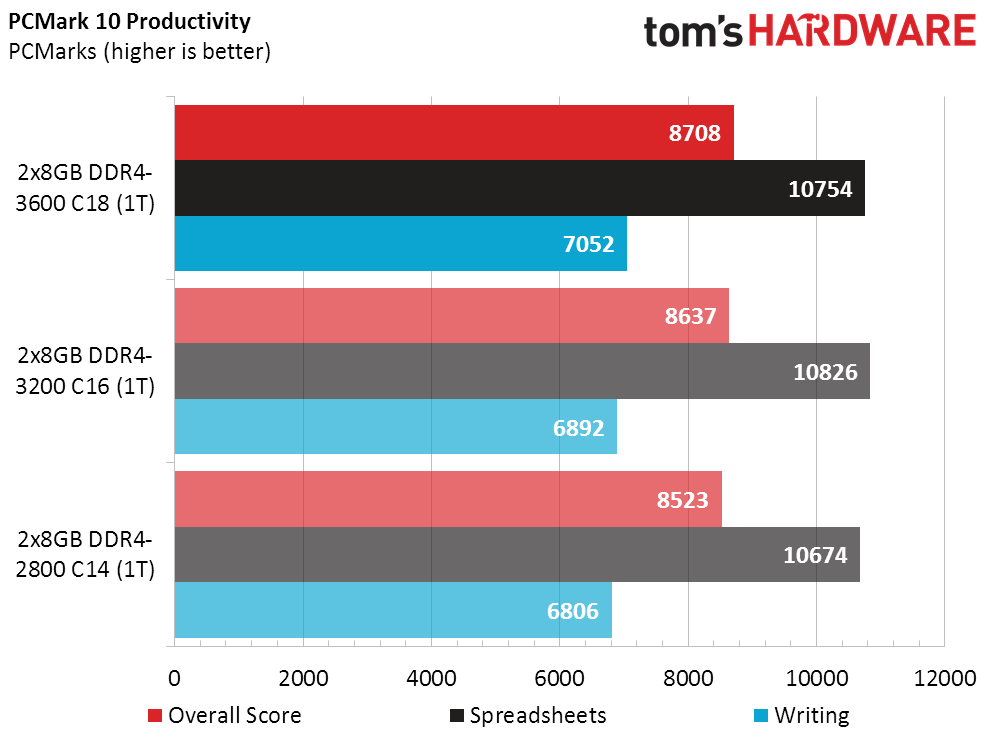
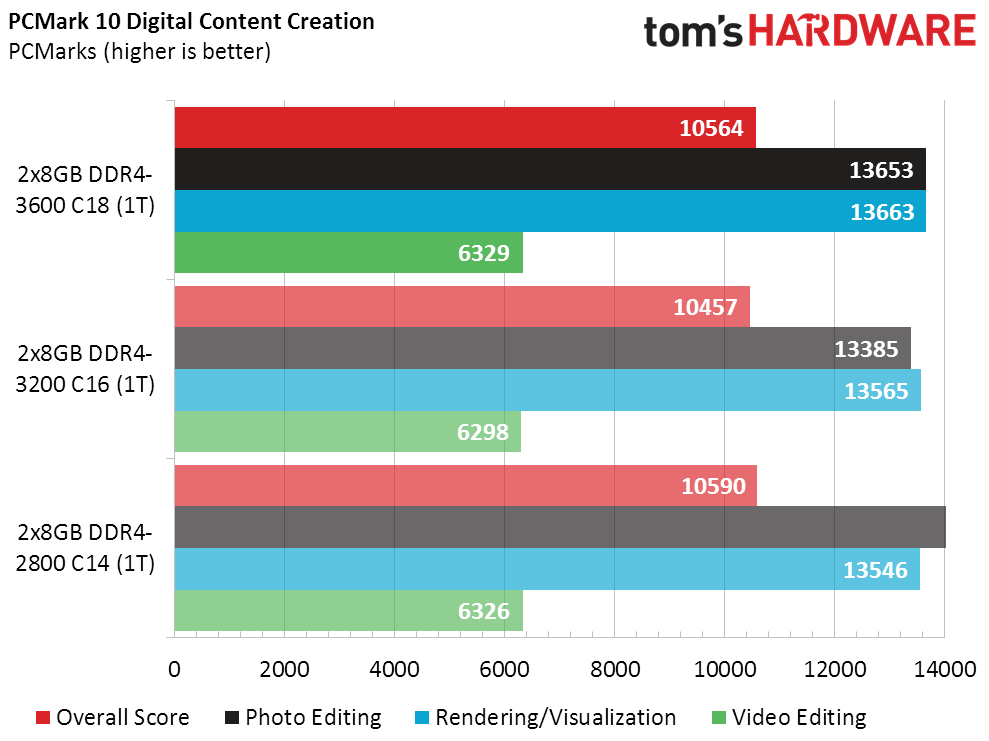
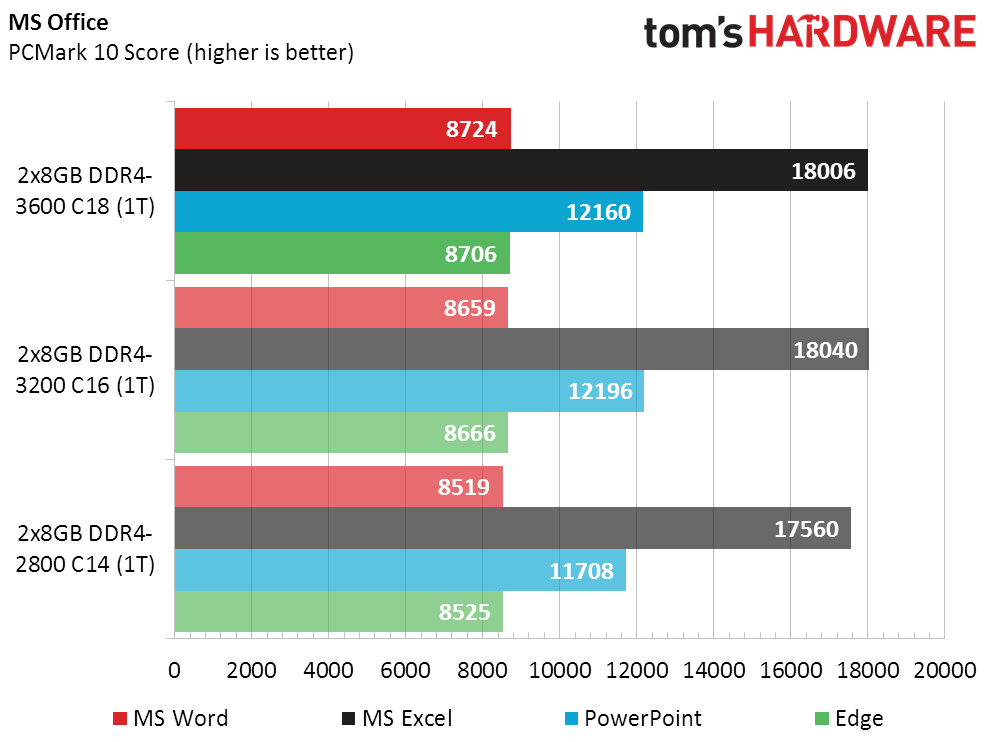
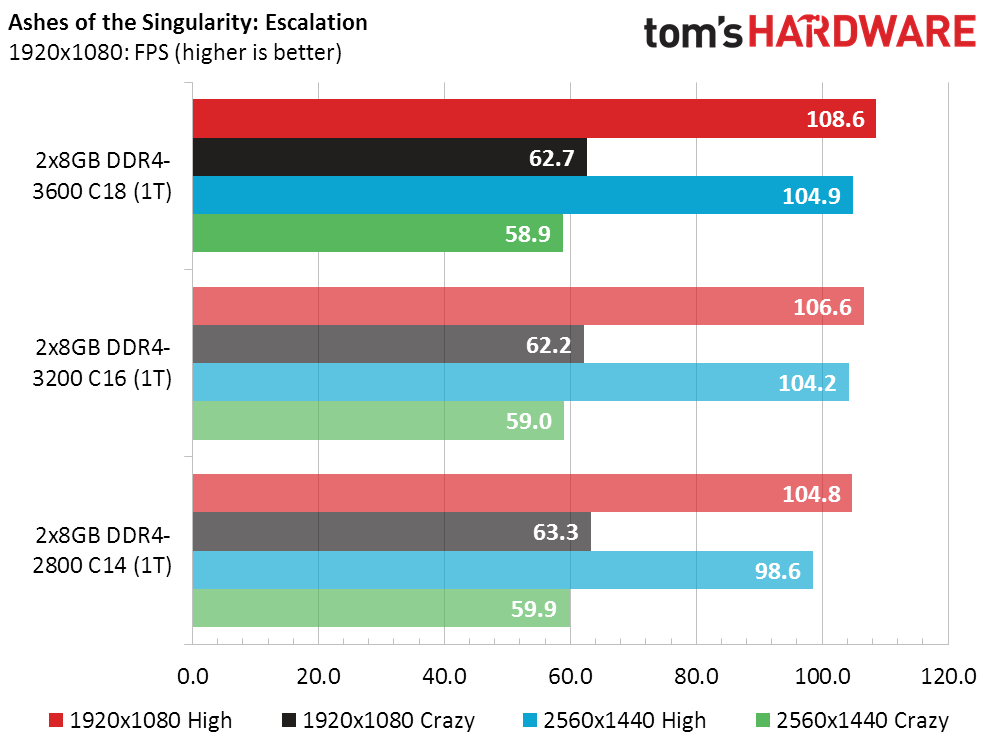
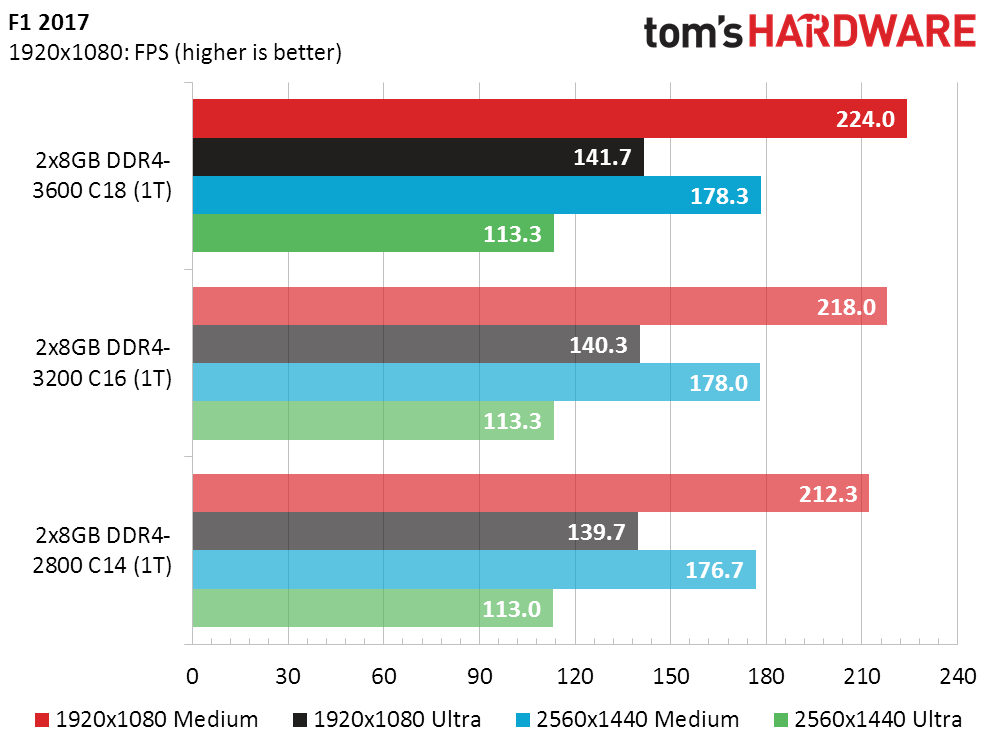
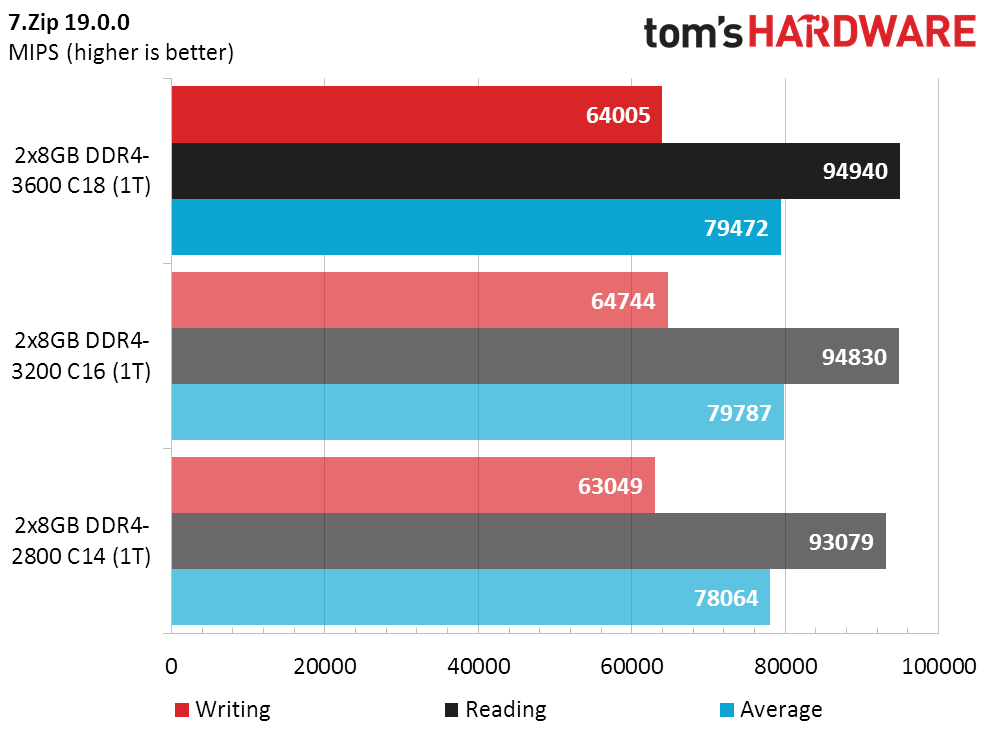
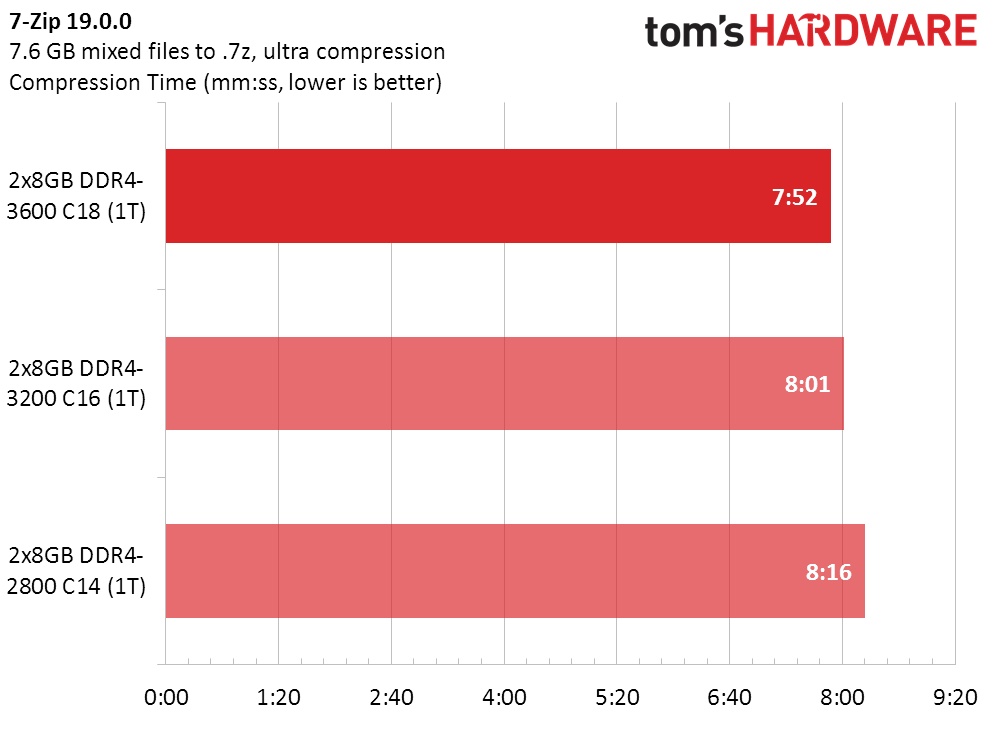
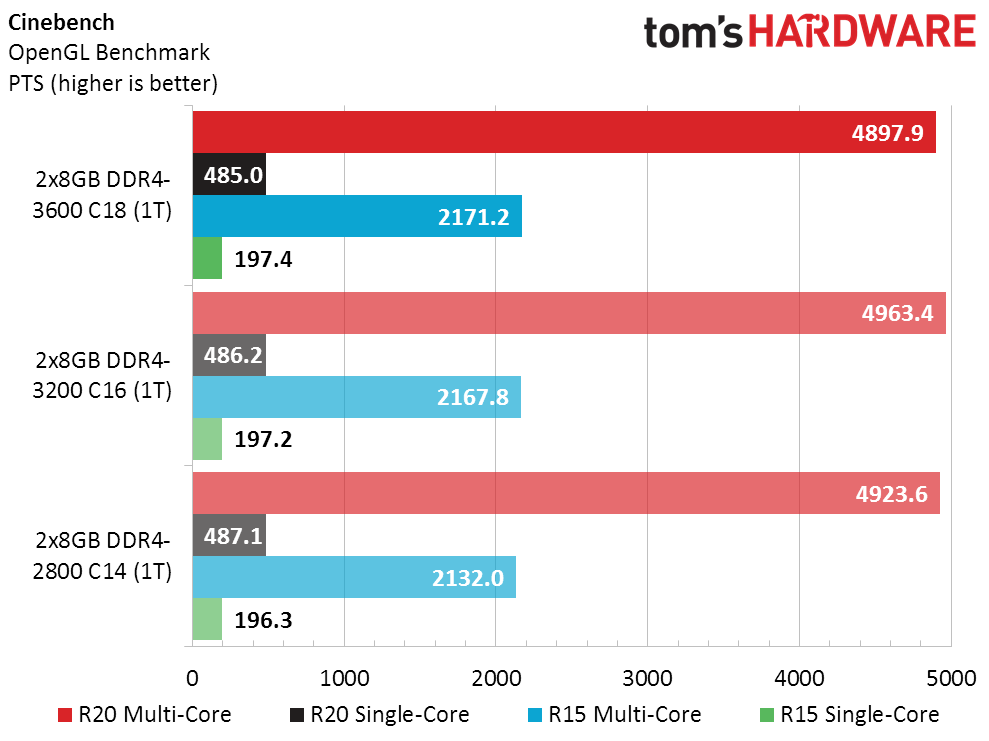
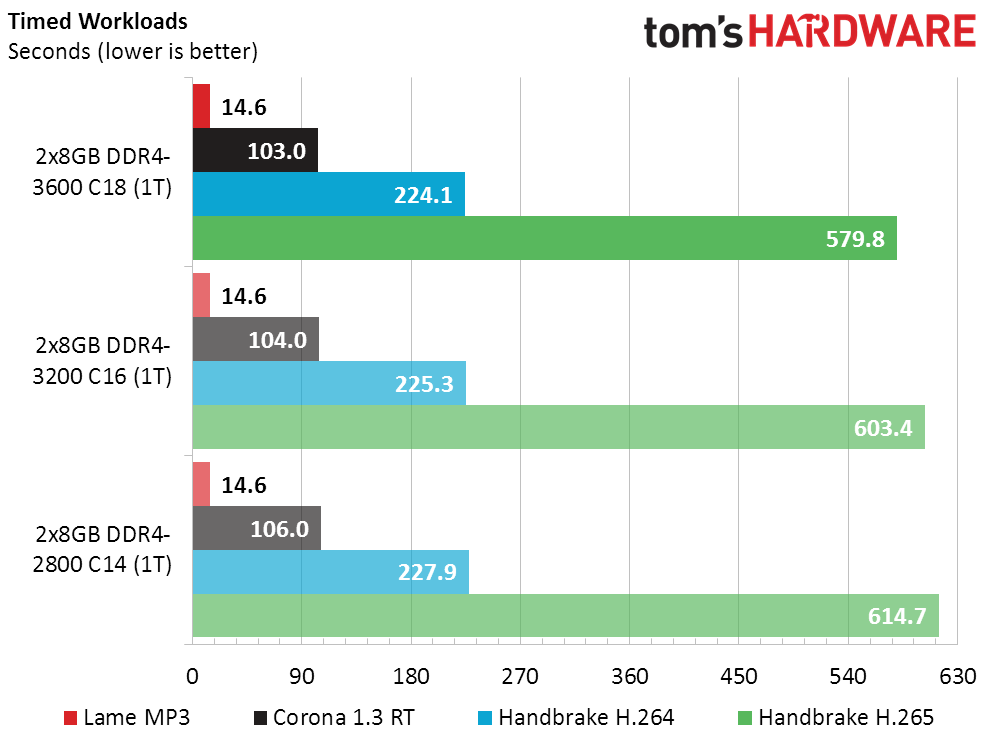
The greatest performance difference in our combined averages is the 2.5% spread between DDR4-3600 and DDR4-2800 in application startup, so why bother? Digging deeper, we find a few applications with larger differences that were minimized through averaging. We even see that Sandra Memory Latency’s dependence on bandwidth means that all-else-equal…isn’t.
The performance difference between our top and bottom benchmark set jumps to 5% in both F1 2017 and 7-Zip, and 4% in Ashes. And that’s total system performance, so if you use these apps, it might pay to spend a little extra on fast memory. Five percent of a $1000 build is $50, and that’s typically more than the difference in price between DDR4-2800 and DDR4-3600.
DDR4-3200 performance is dead center between DDR4-2800 and DDR4-3600, making the Ryzen 7 3700X appear “optimized” for a broad range of date rates rather than DDR4-3200 alone.
Latency: What About DDR4-3200 C14?
We started our tests by trying to equalize latency across every testing frequency, but that’s not going to cut it for ultimate performance. Shaving two cycles off DDR4-3600 C18 and DDR4-3200 C16 gives us DDR4-3600 C16 and DDR4-3200 C14, where the later should get a bigger boost since two cycles are a larger portion of sixteen than of eighteen. Is that greater boost enough to validate rumors that DDR4-3600 C16 and DDR4-3200 C14 are roughly equivalent?
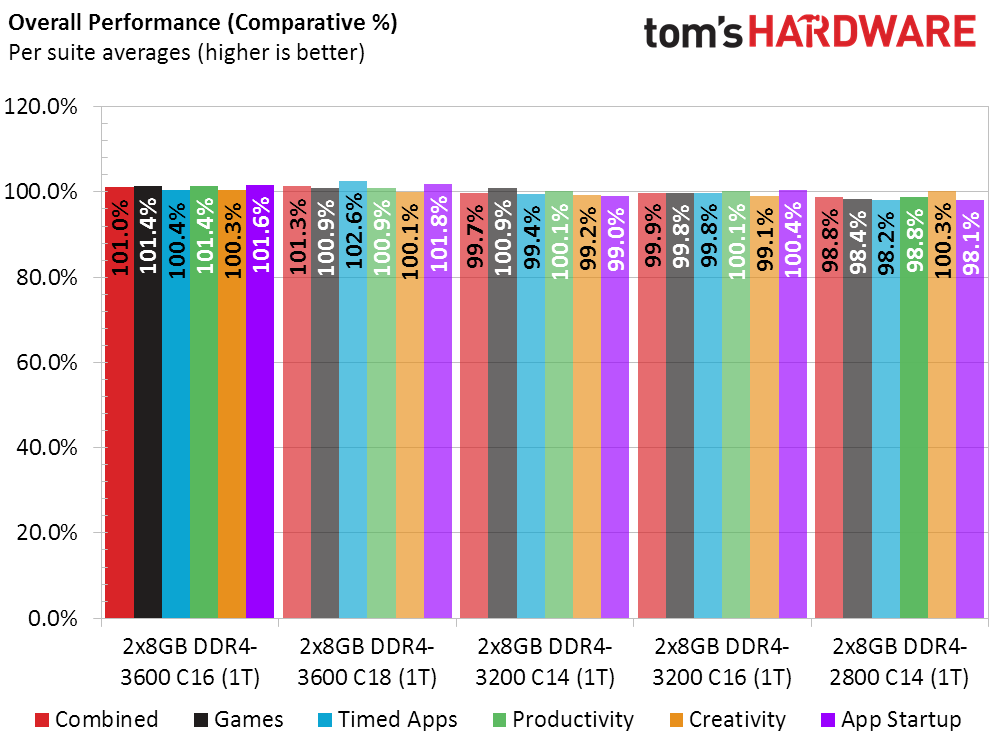
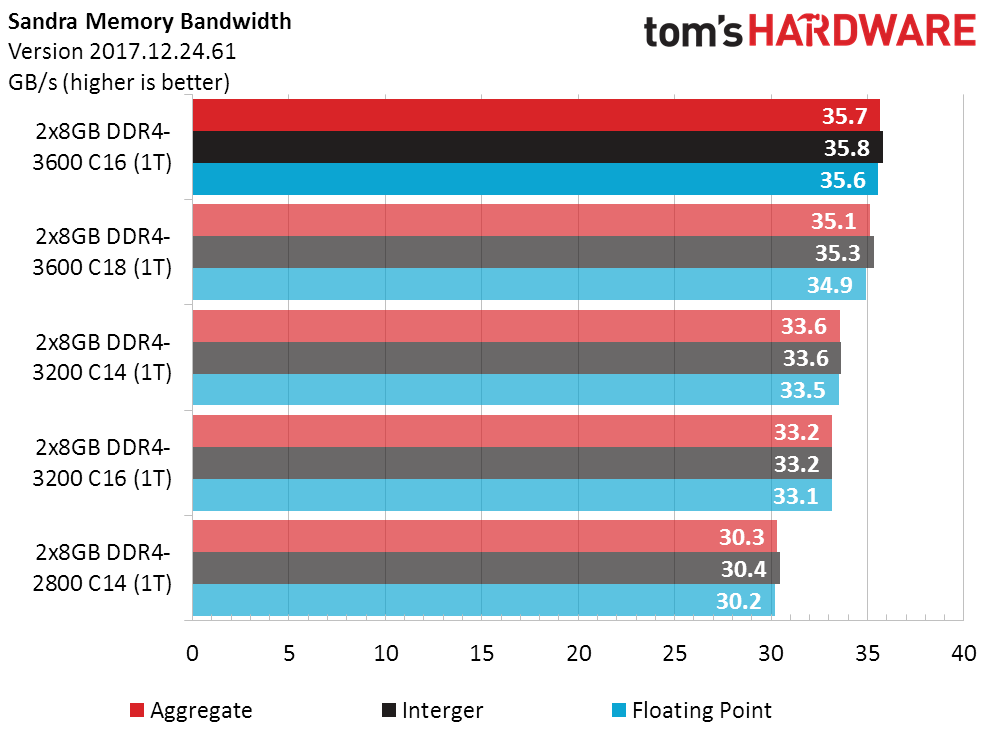

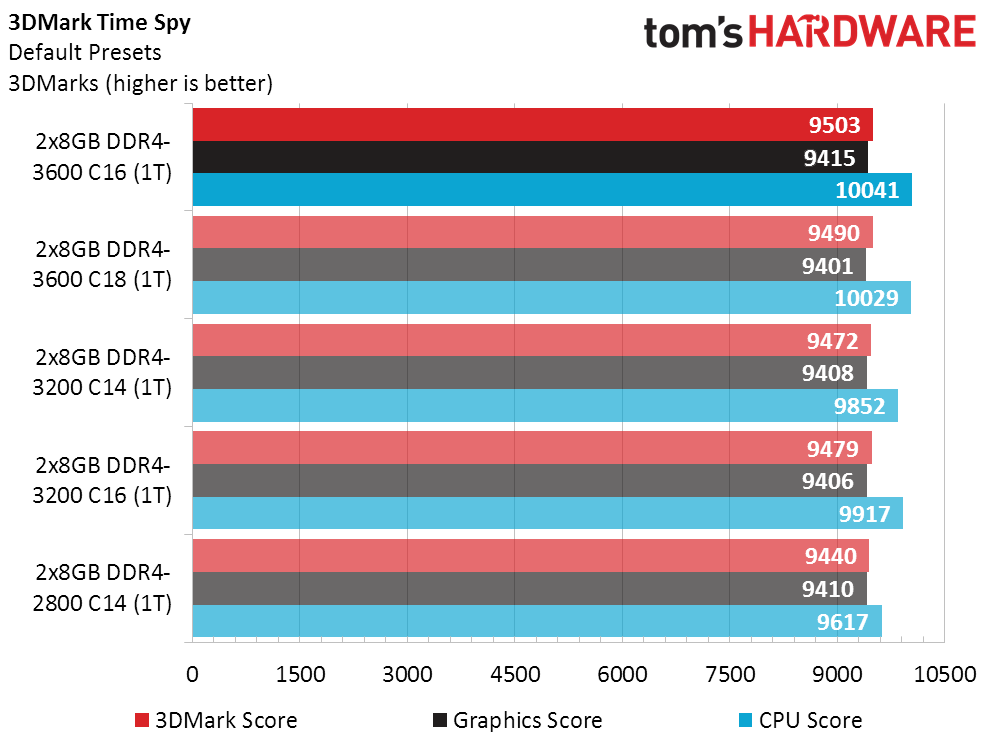
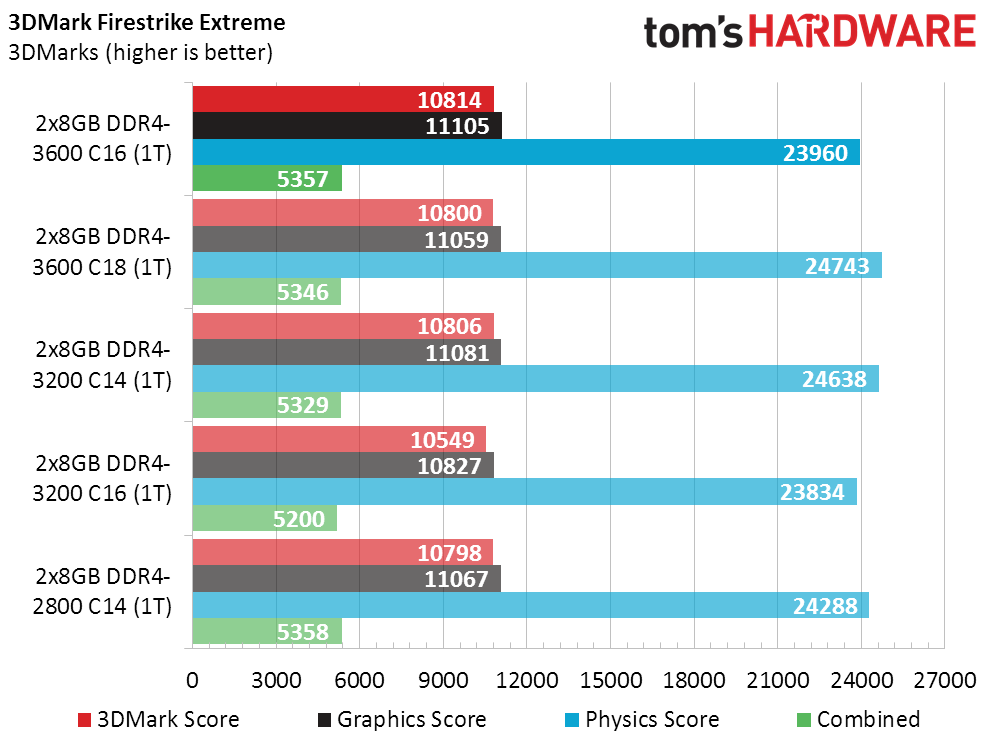
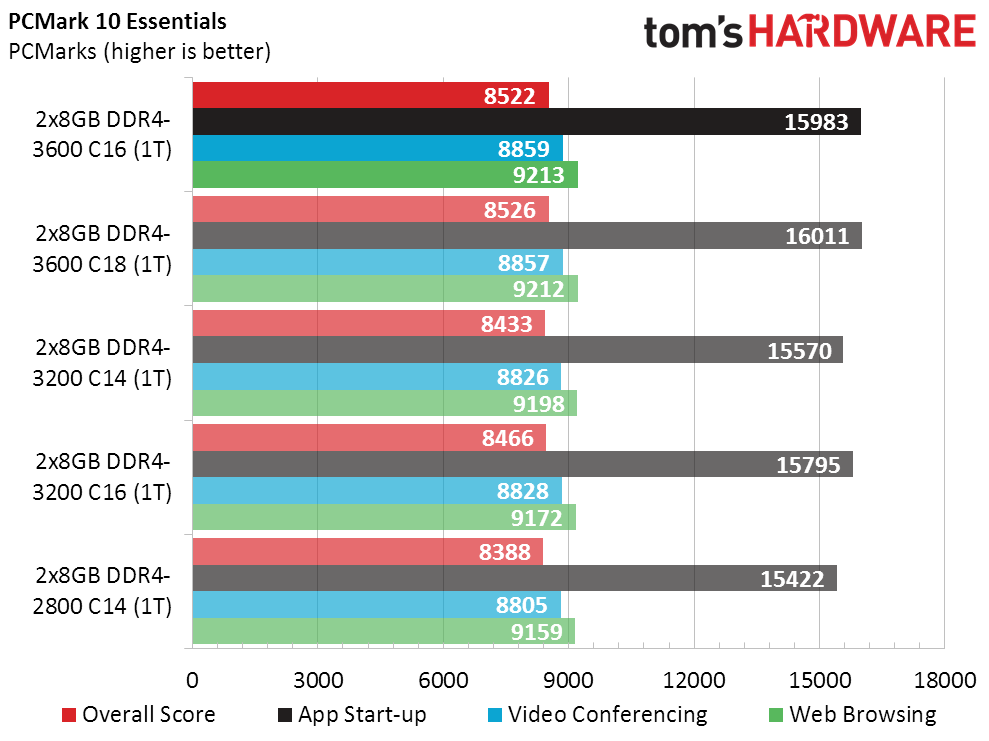
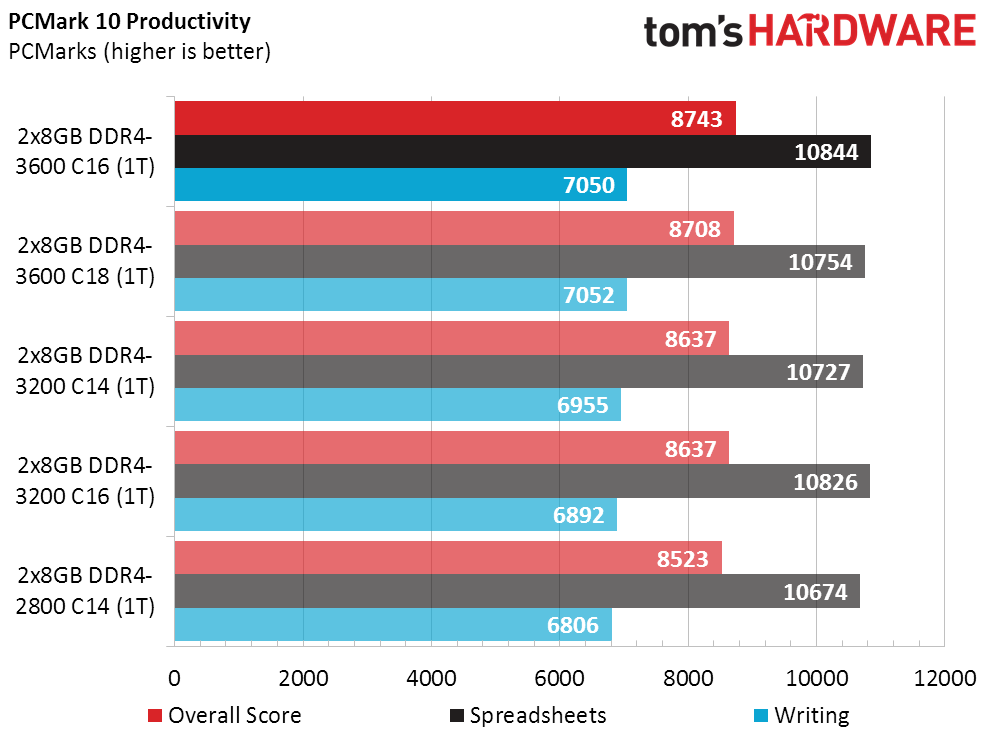
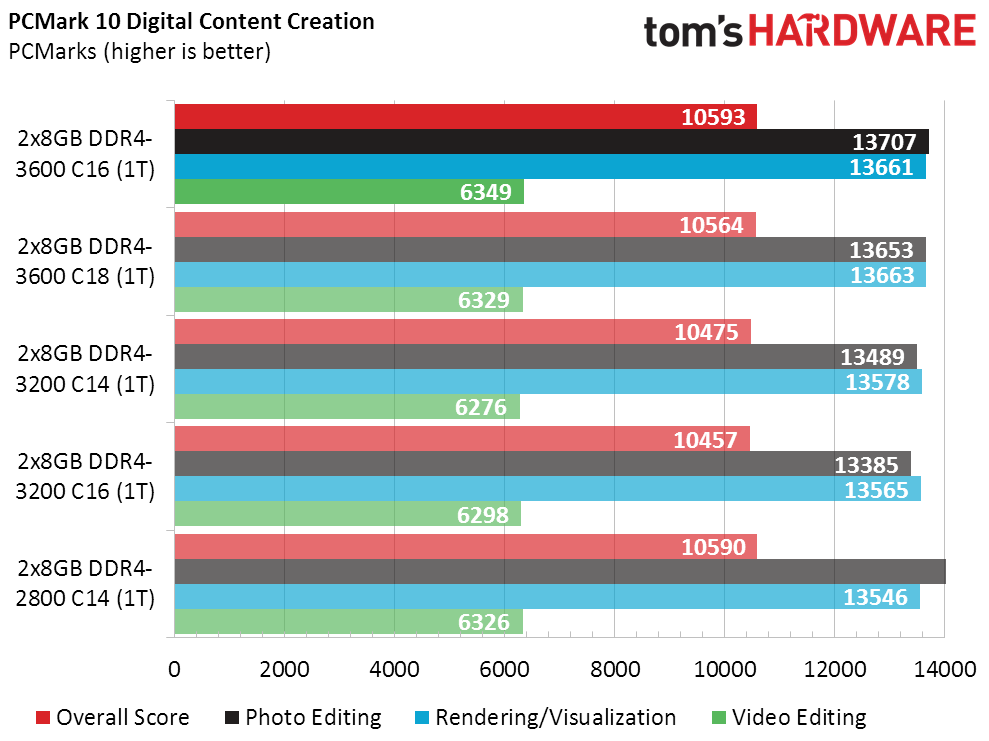
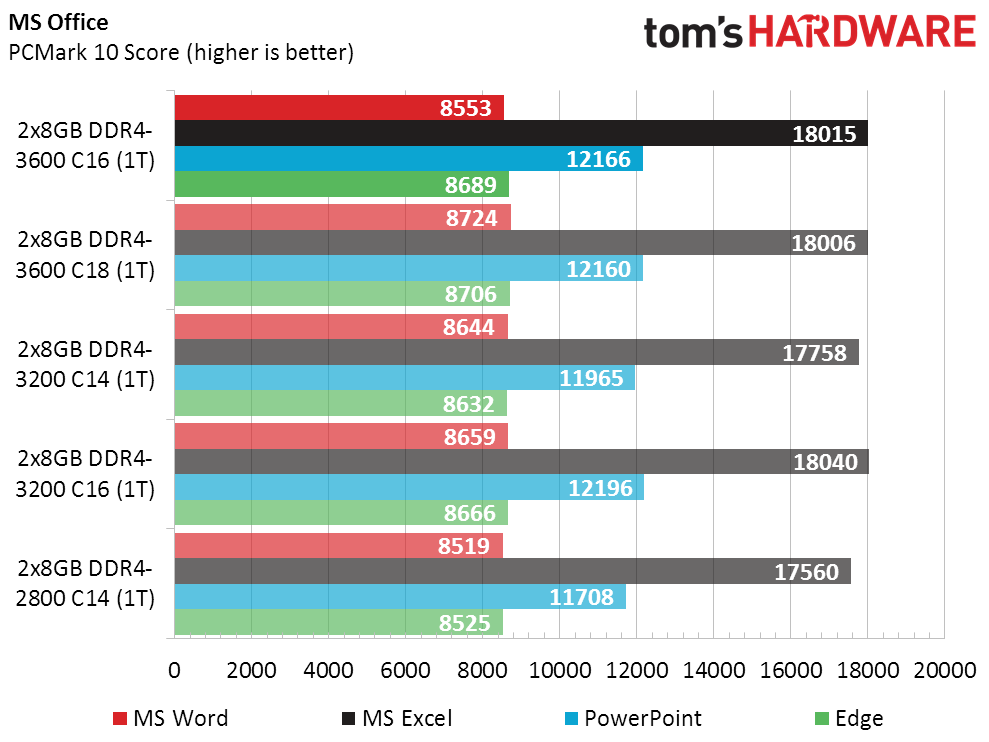
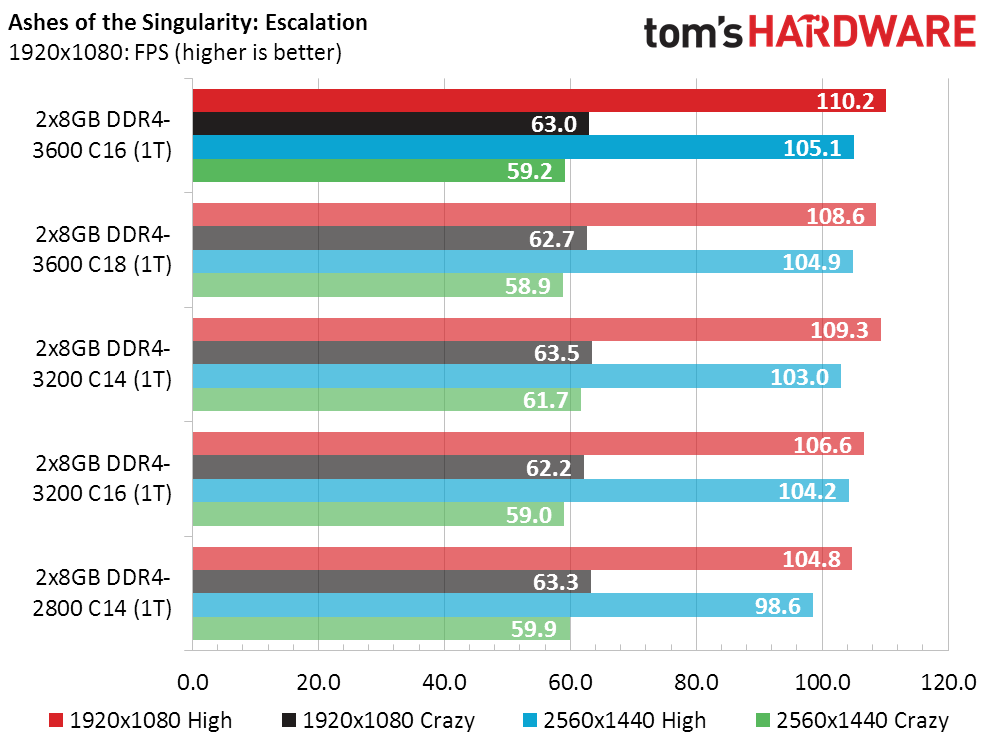
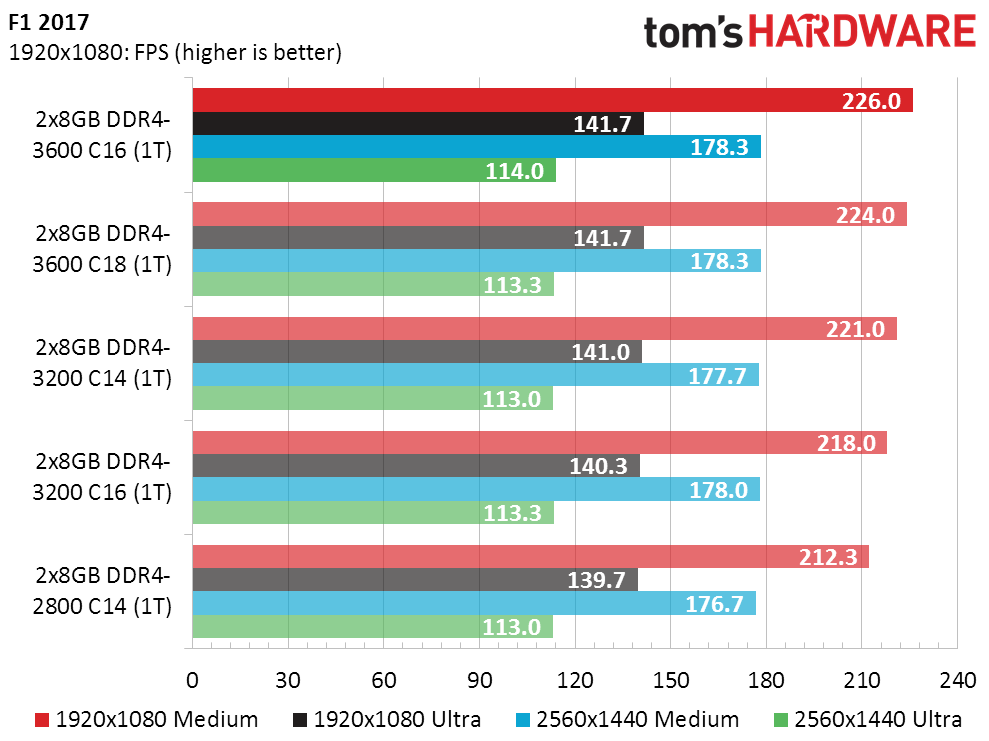
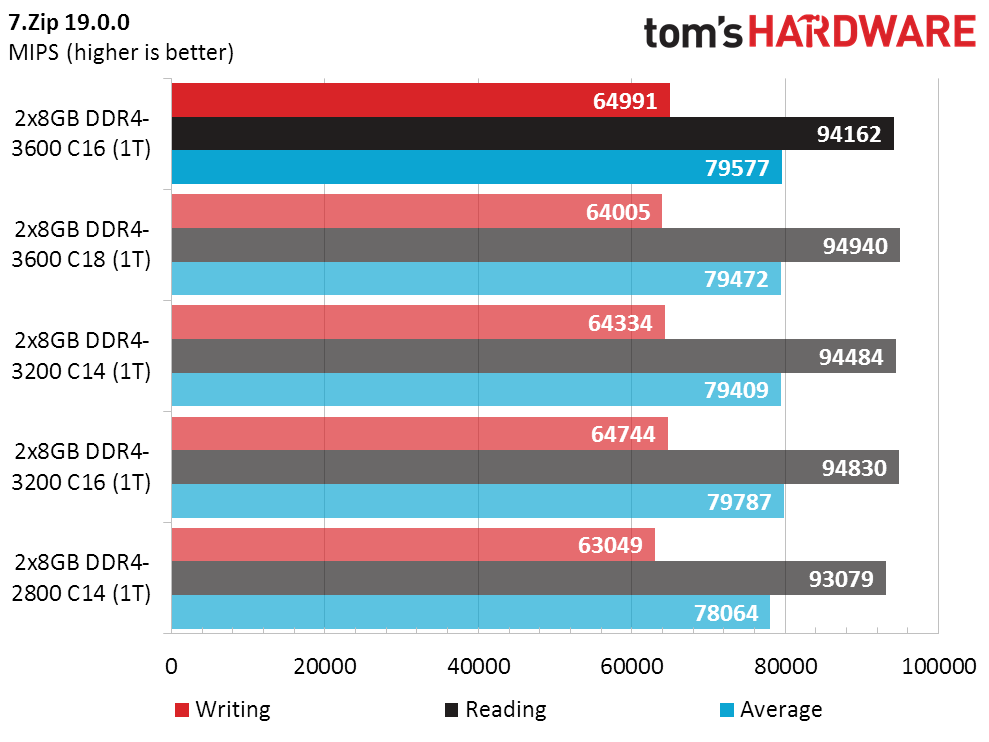
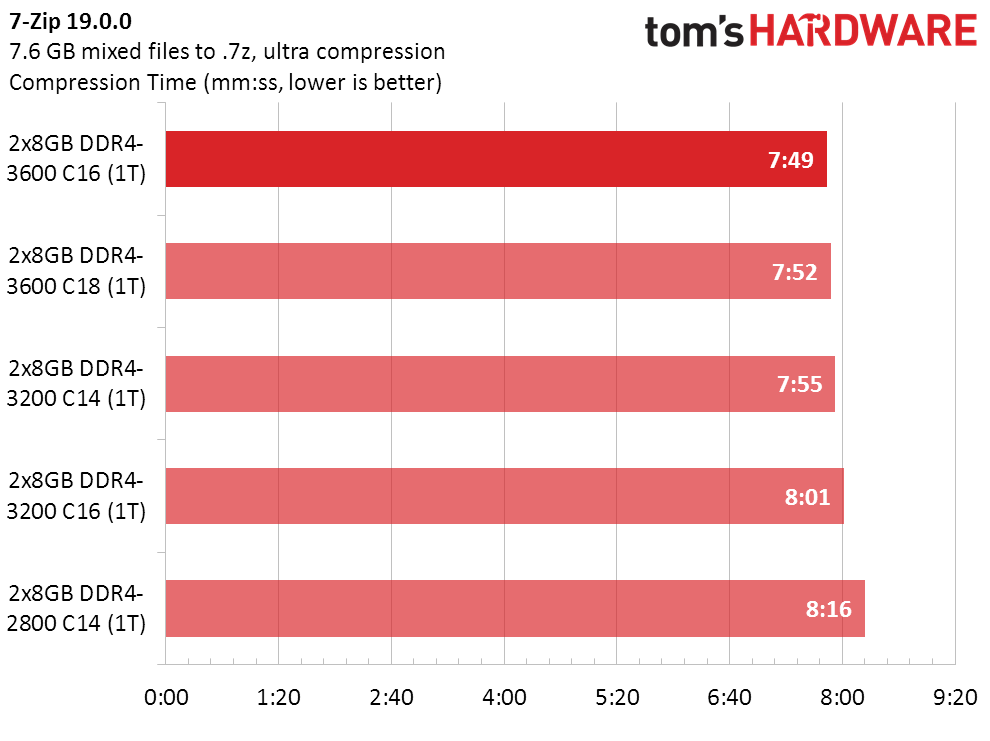
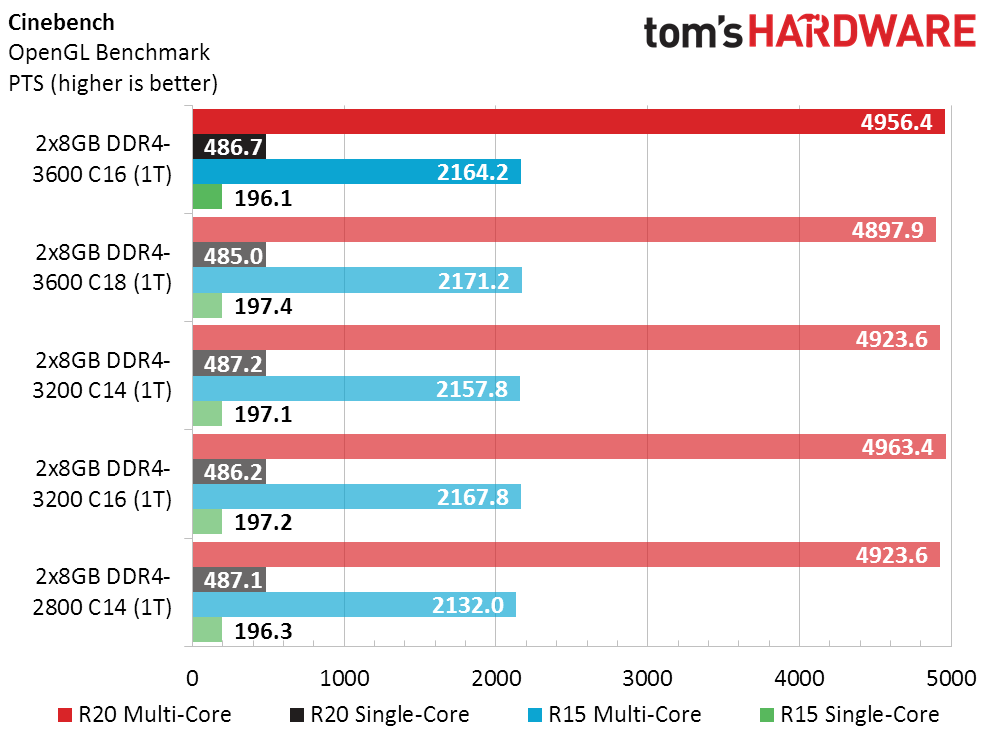
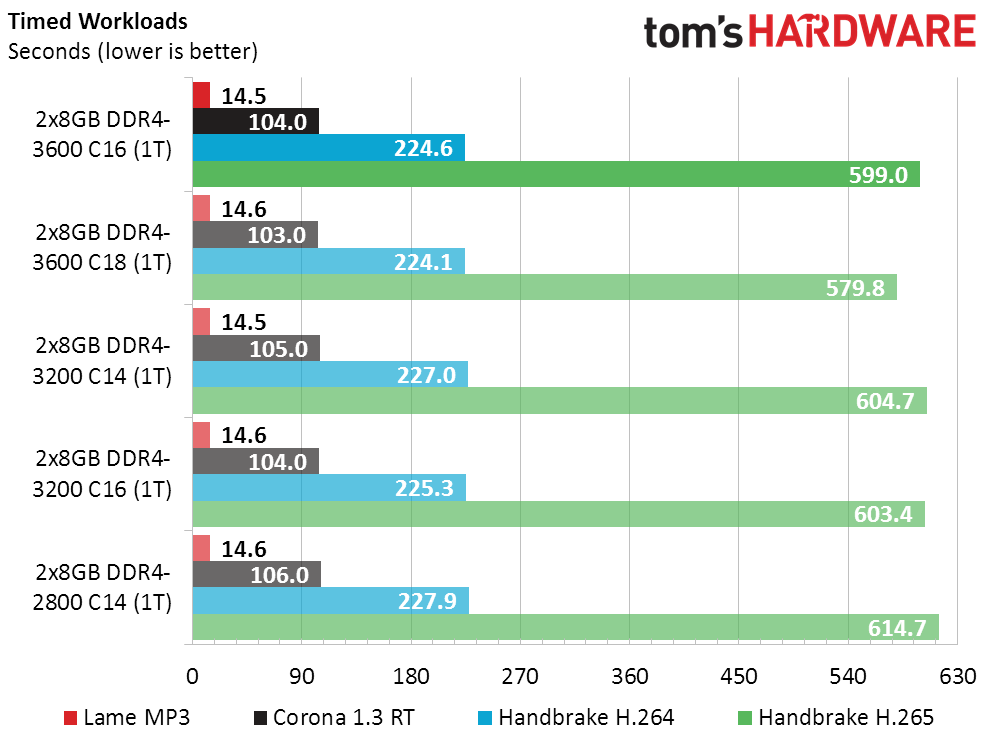
CAS 14 did very little for our DDR4-3200 configuration, to the point that it appeared to have lost a step in our overall performance score while falling within the margin of error. But the margin of error is most noticeable in applications where we expect a tie, and we can still separate a few of the tests that are more memory-dependent.
DDR4-3200 C14 did slightly better than DDR4-3600 C18, but worse than DDR4-3600 C16, in Ashes. F1 2017 and our custom 7-Zip file compression timed test show that the extra bandwidth is at least as important as the tighter timings.
Command Rate: What Are The Benefits Of 1T?
Command rate is the number of cycles a command must be presented before a memory operation commences, so that 2T incurs an additional cycle of latency to every memory access. It makes sense that most people would shoot for 1T, except that higher data rates often make this unworkable, particularly when more ranks of memory are used (ie, two “double-sided” or four “single-sided” DIMMs). The reason that we’ve used only half of our four-DIMM kit thus far is that it won’t run all four DIMMs at DDR4-3600 and 1T, hence you’ll want to see the penalty of 2T before we add four-DIMM configurations to the mix.
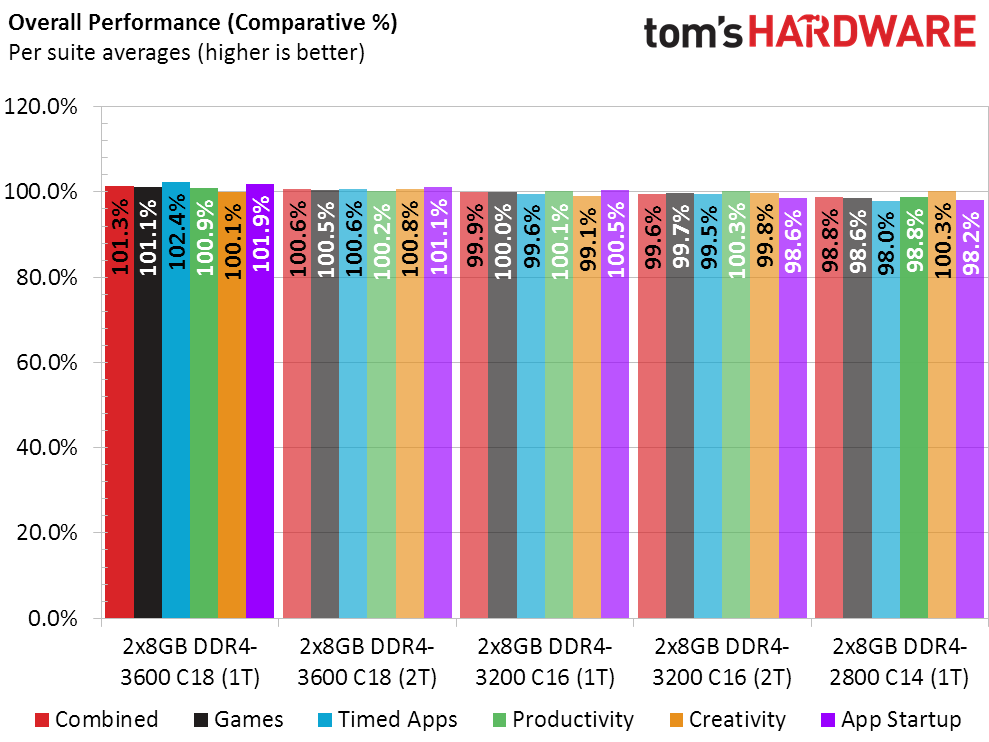
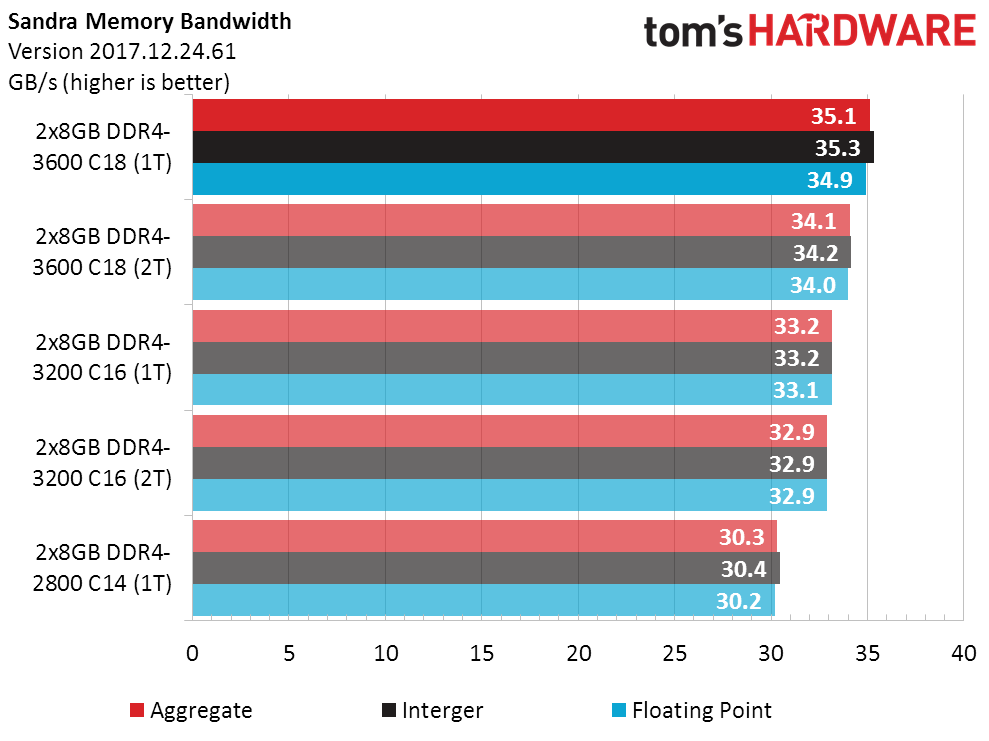
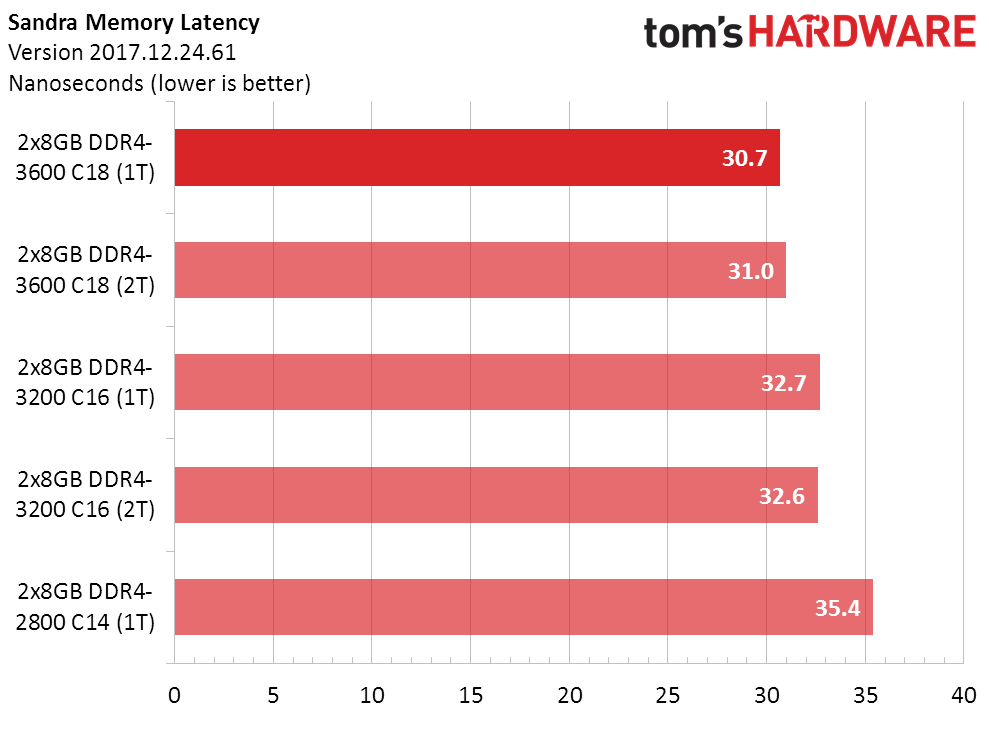
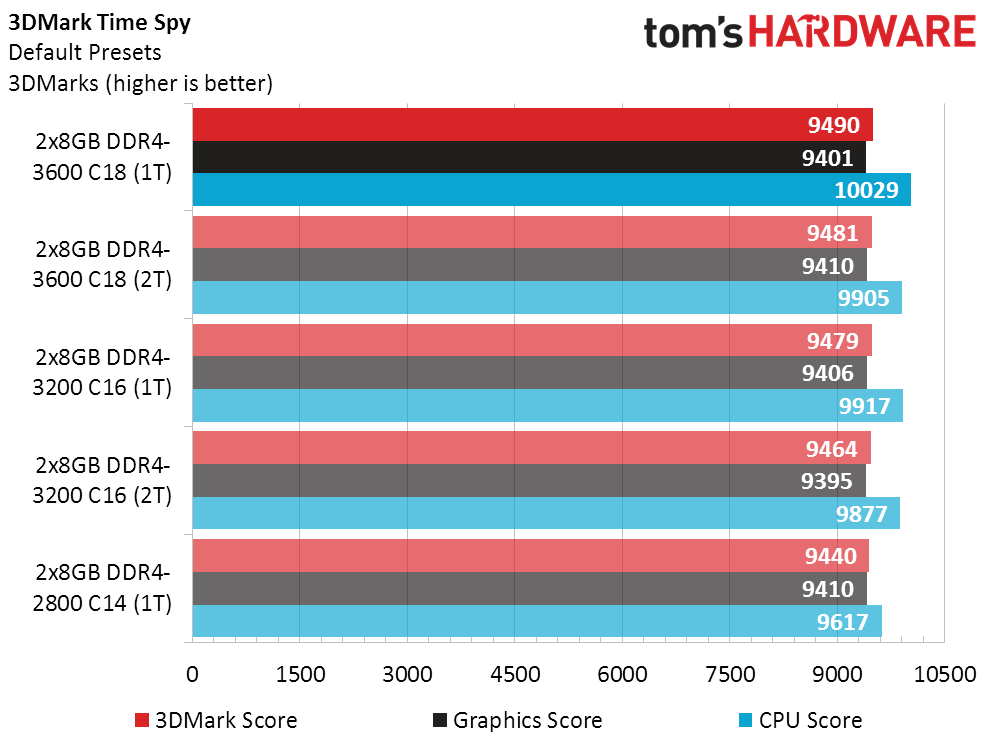
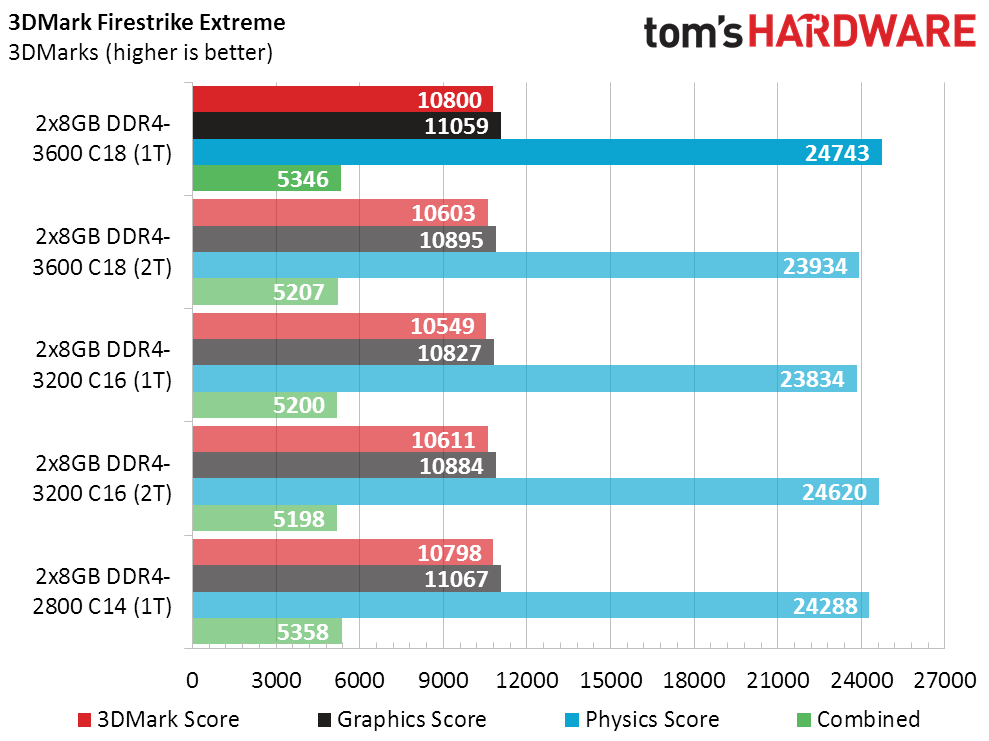
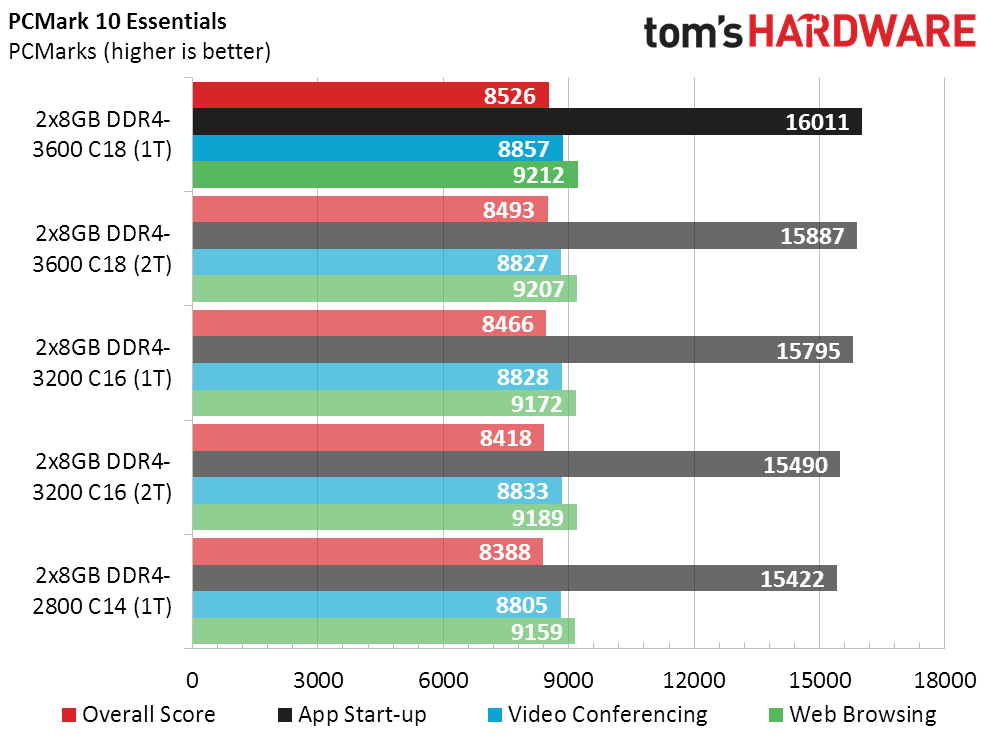
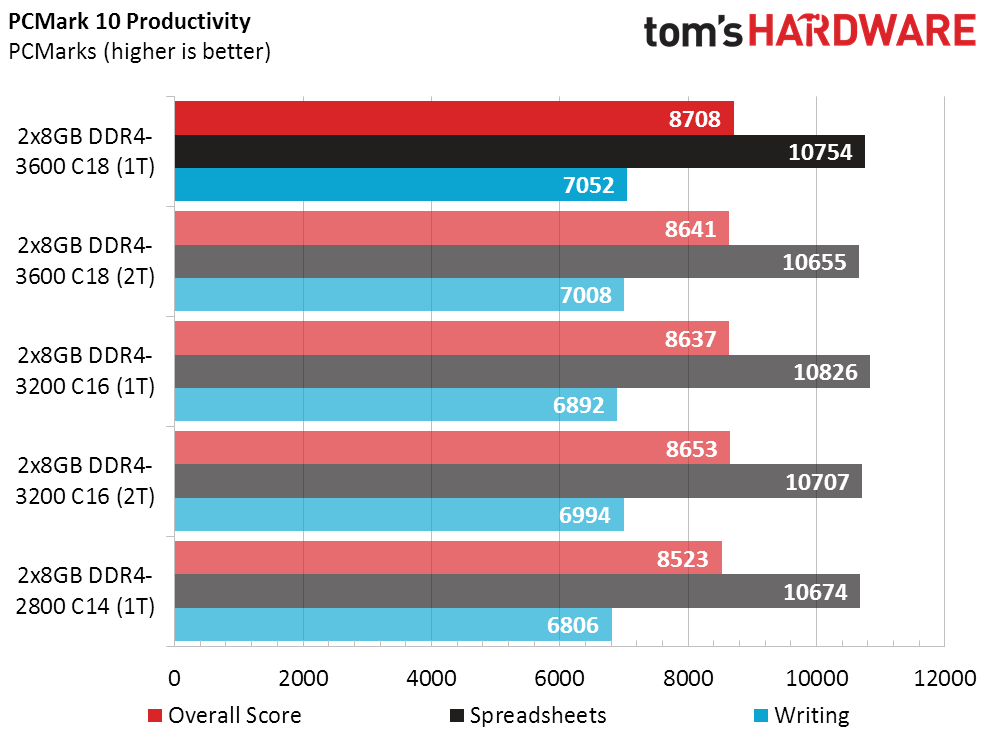
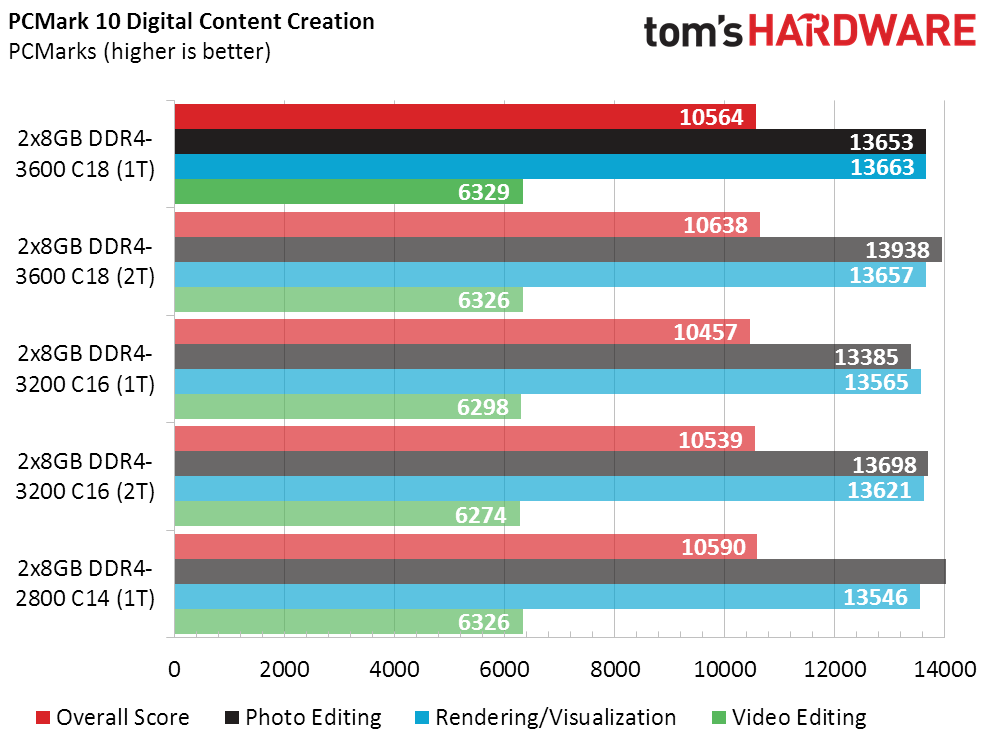
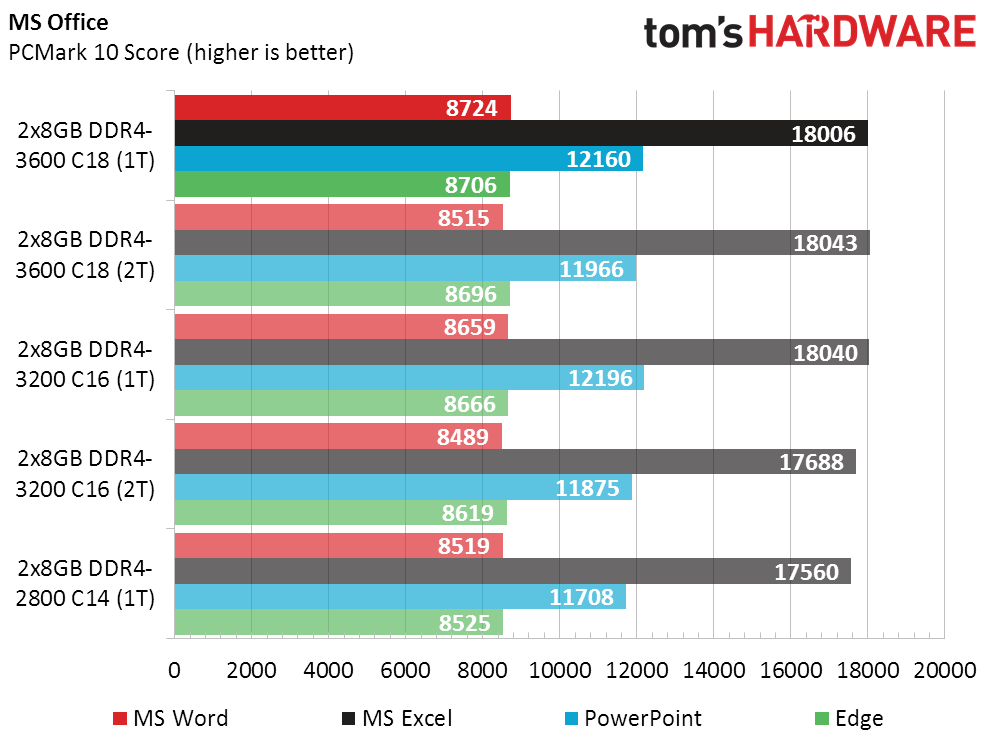
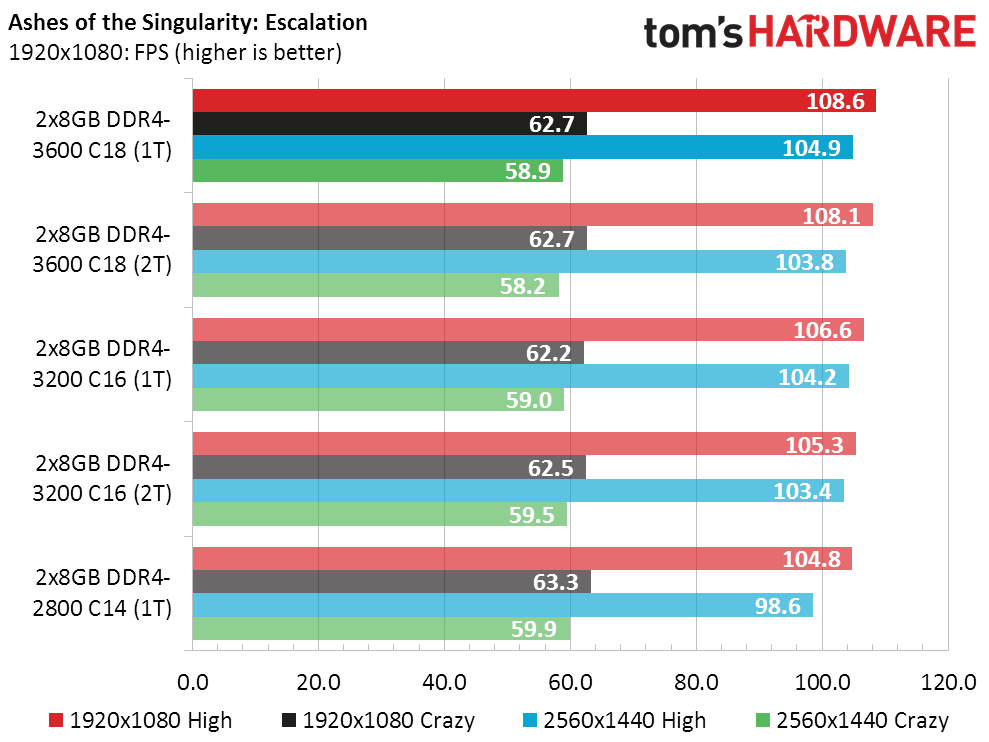
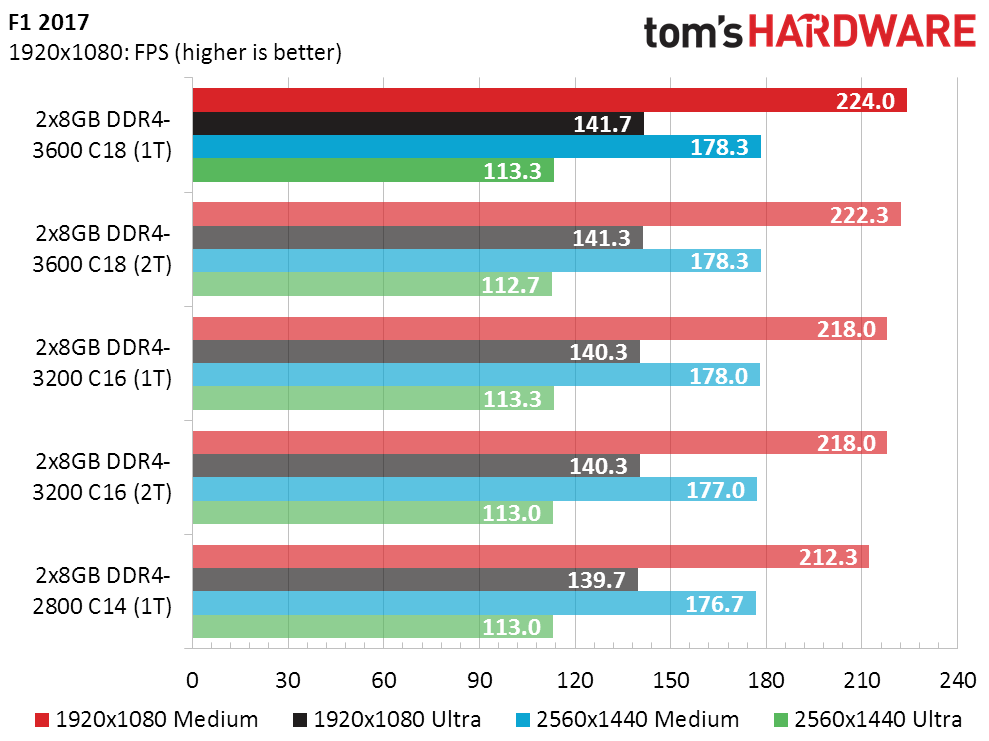

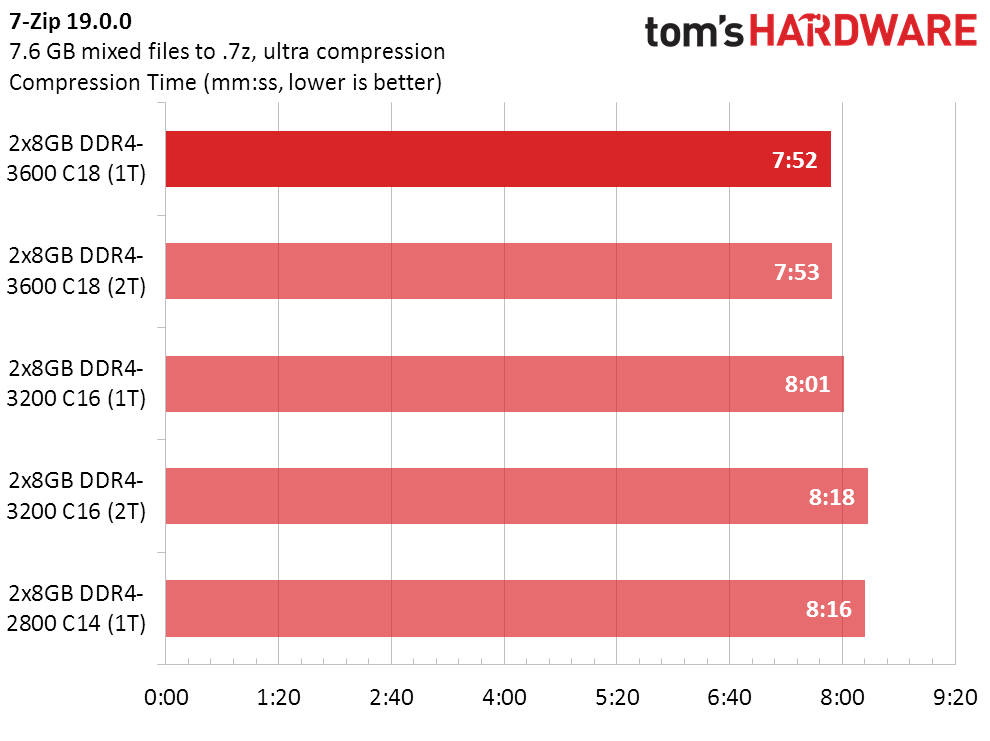

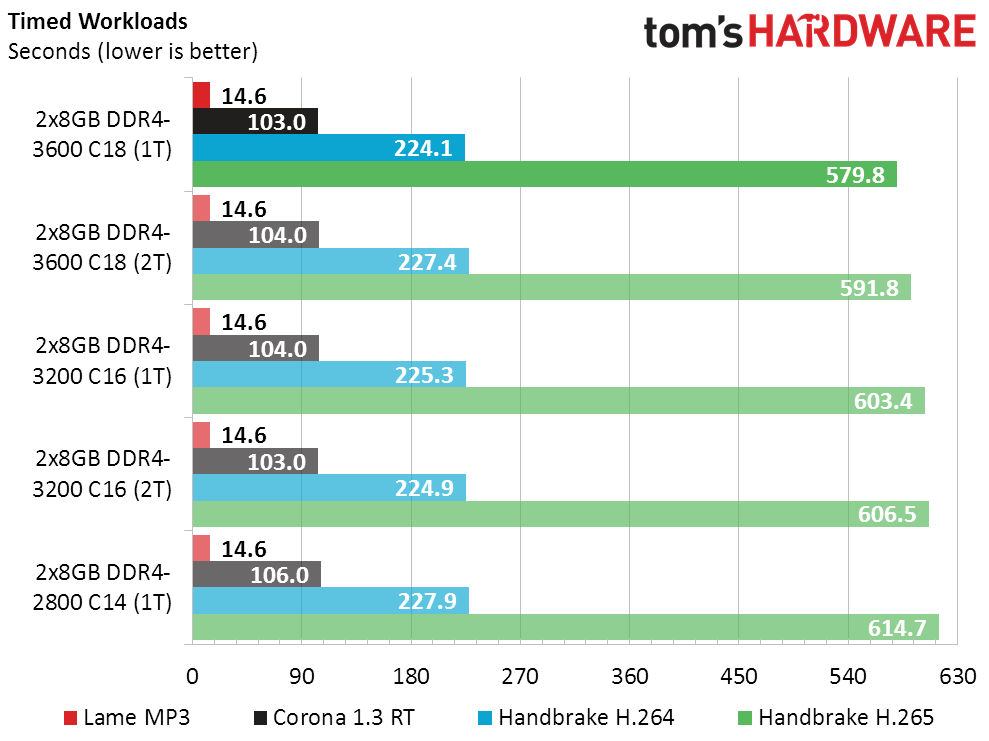
Based on entire suites, 2T timings appear to impart a maximum penalty of less than 2% and an average penalty of less than 1%. What do our memory-bottlenecked benchmarks show?
We see a 3% penalty in 7-Zip for 2T timings at DDR4-3200, which makes a little more sense than the previous chart because a single cycle of extra time is a little longer at DDR4-3200 than at DDR4-3600. The difference could be little more than 2%, since numbers near a half-percent are either rounded upward or downward.
Capacity: Does More Memory Perform Better?
As we prepare to compare the performance of two DIMMs to four, we thought we should first show how much performance difference there is between 16GB and 32GB. After all, two DIMMs of today’s main test kit have only 16GB, but four have 32GB. Doing so presents a different problem however, as four single-rank DIMMs will perform differently from two, even when the total capacity is the same.
To get 16GB from the same four ranks as our current 32GB set, we needed memory with identical capability but half the capacity. And since those haven’t been produced for several years, we hopped in the wayback machine and grabbed a set from this 2015 test platform.
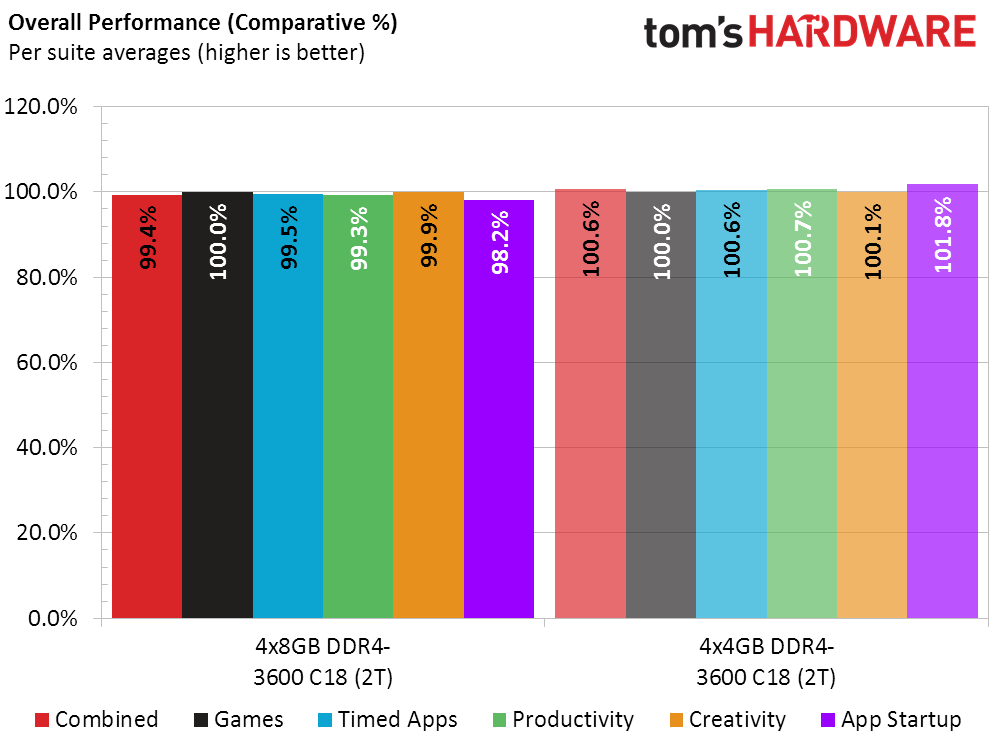
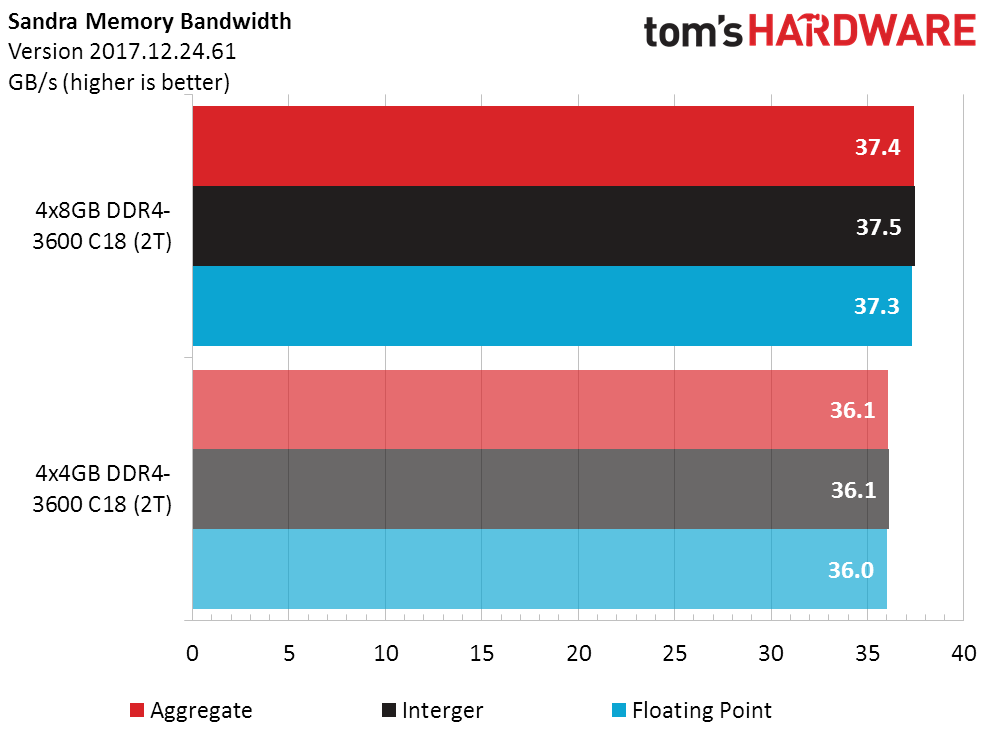
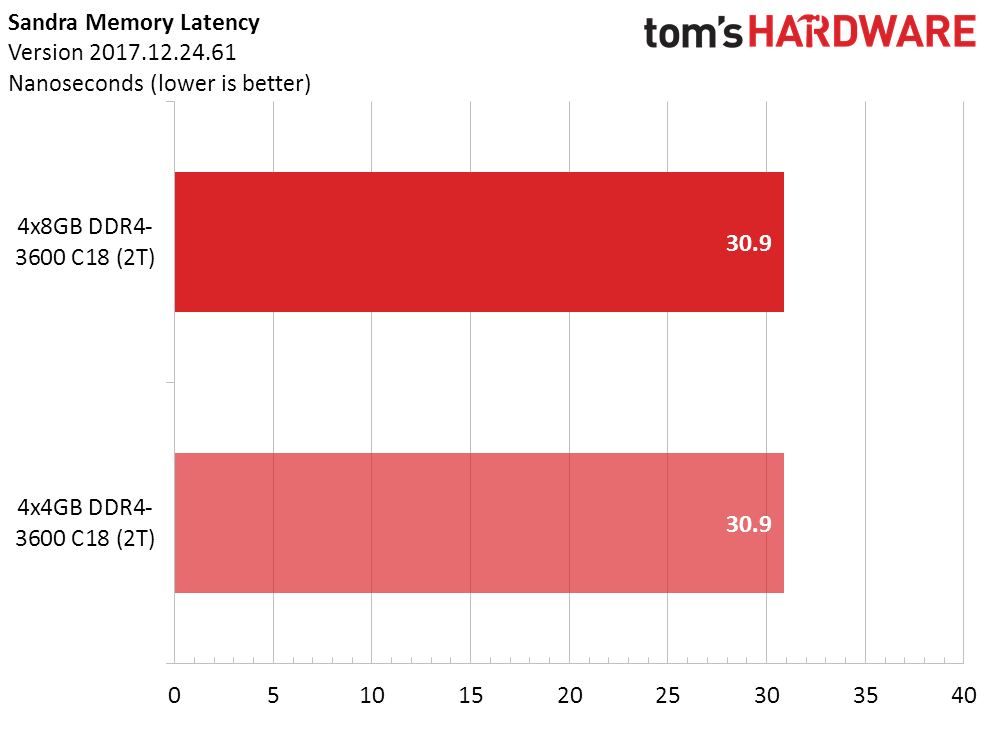

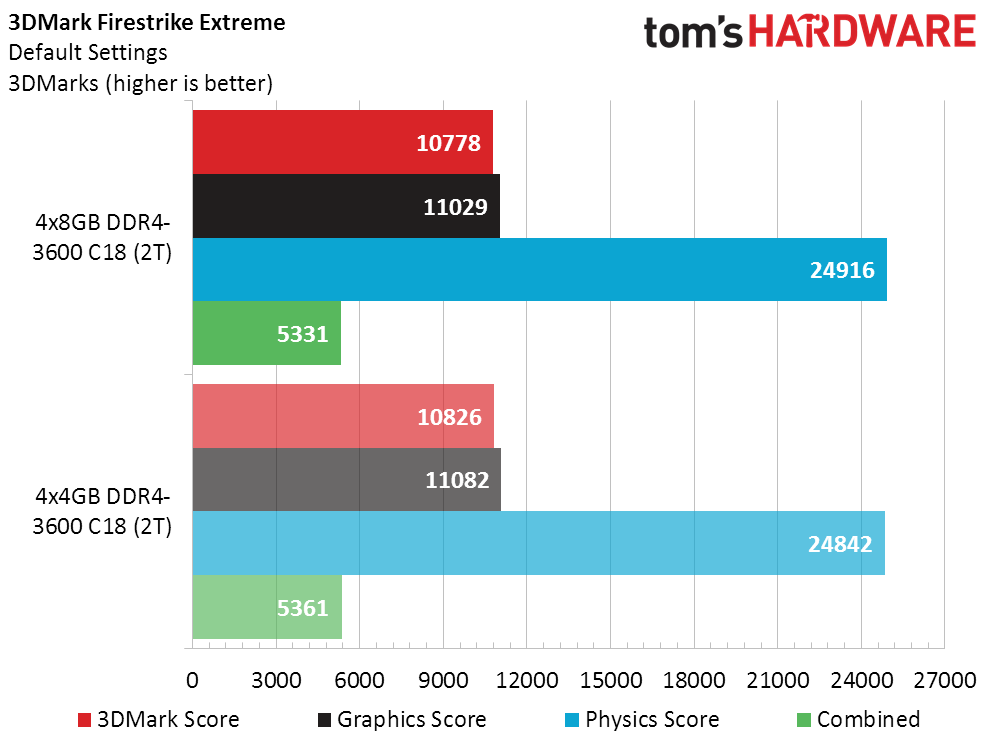


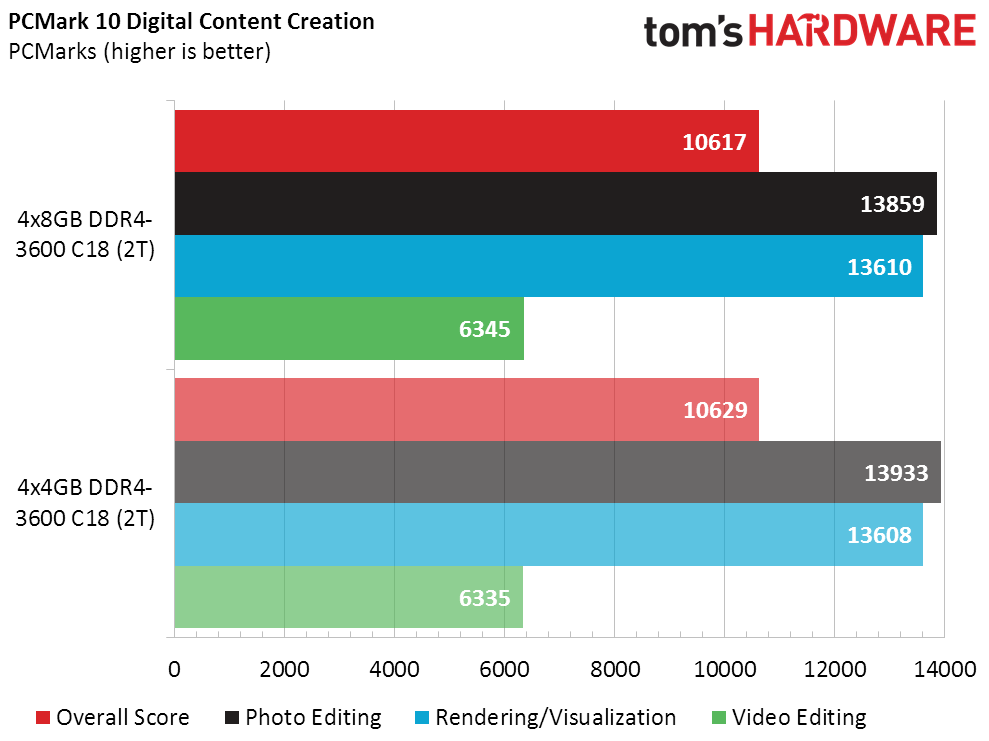
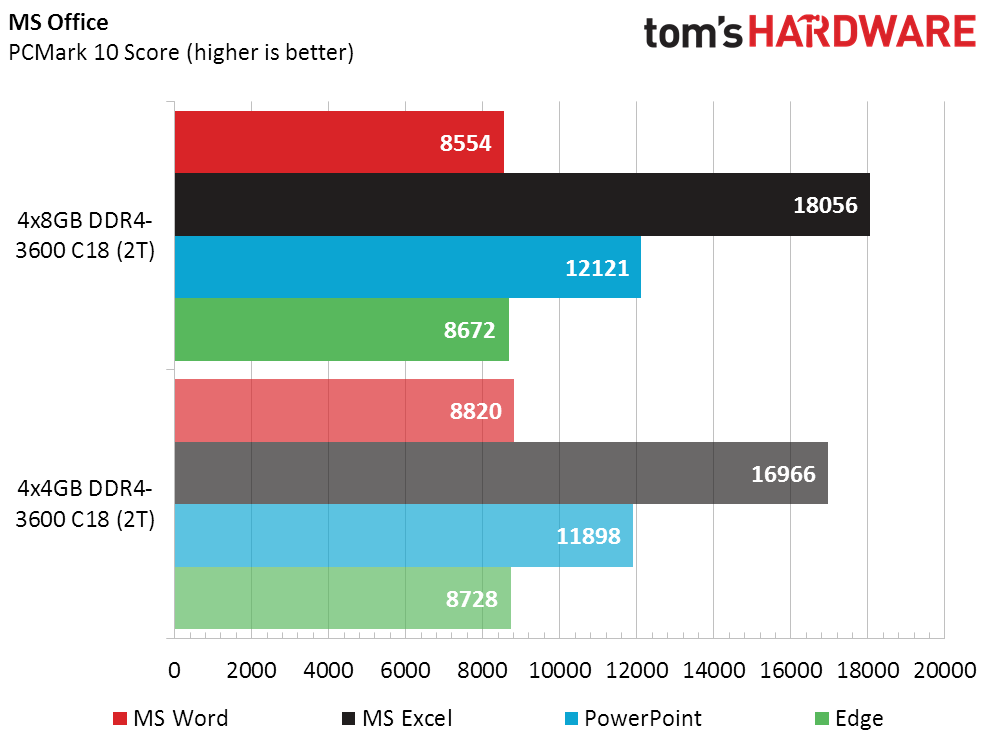
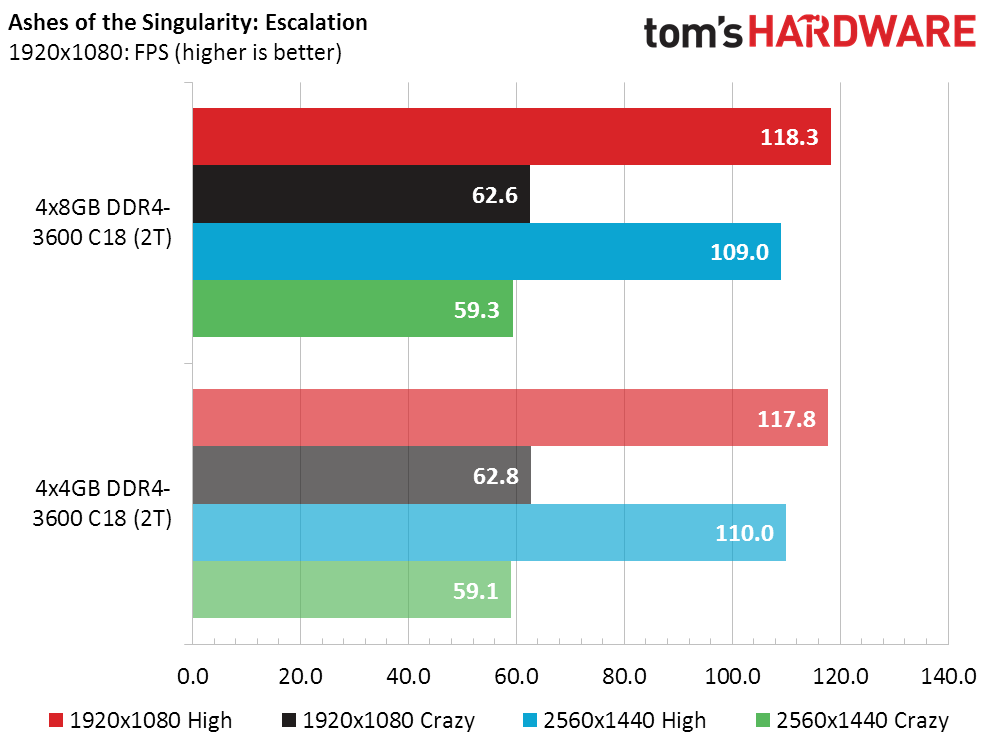
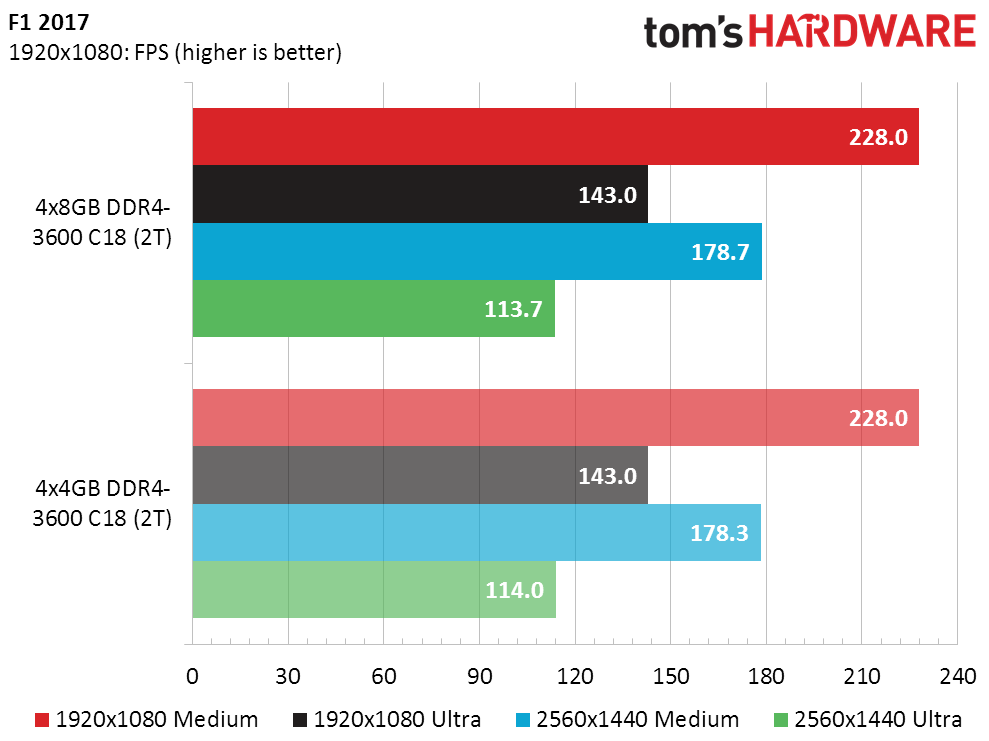
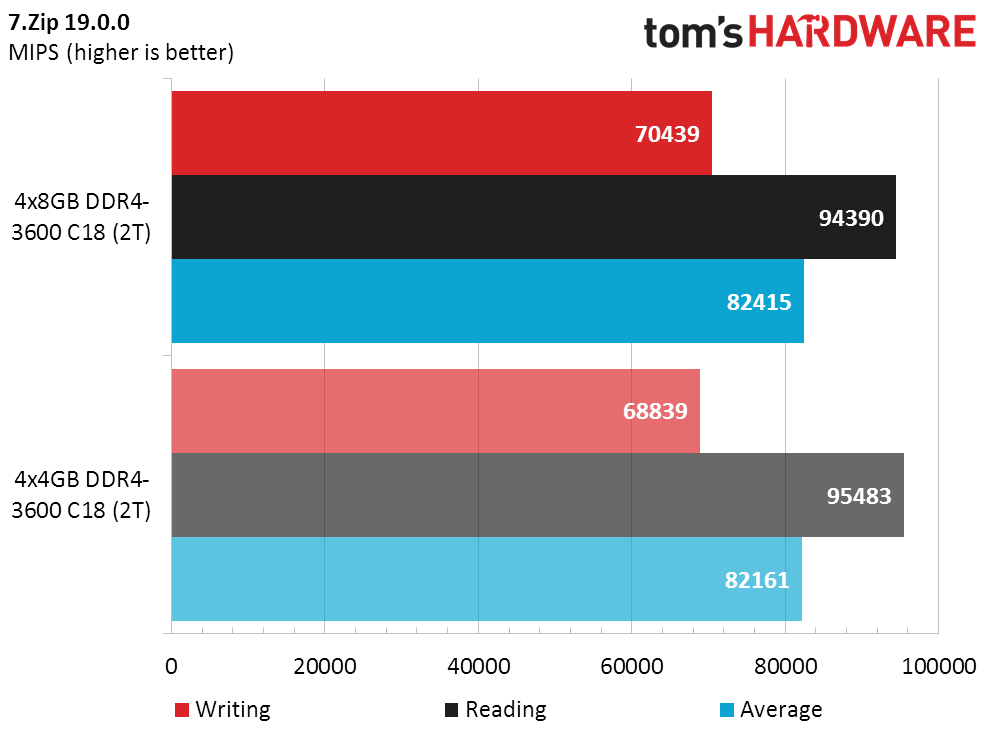
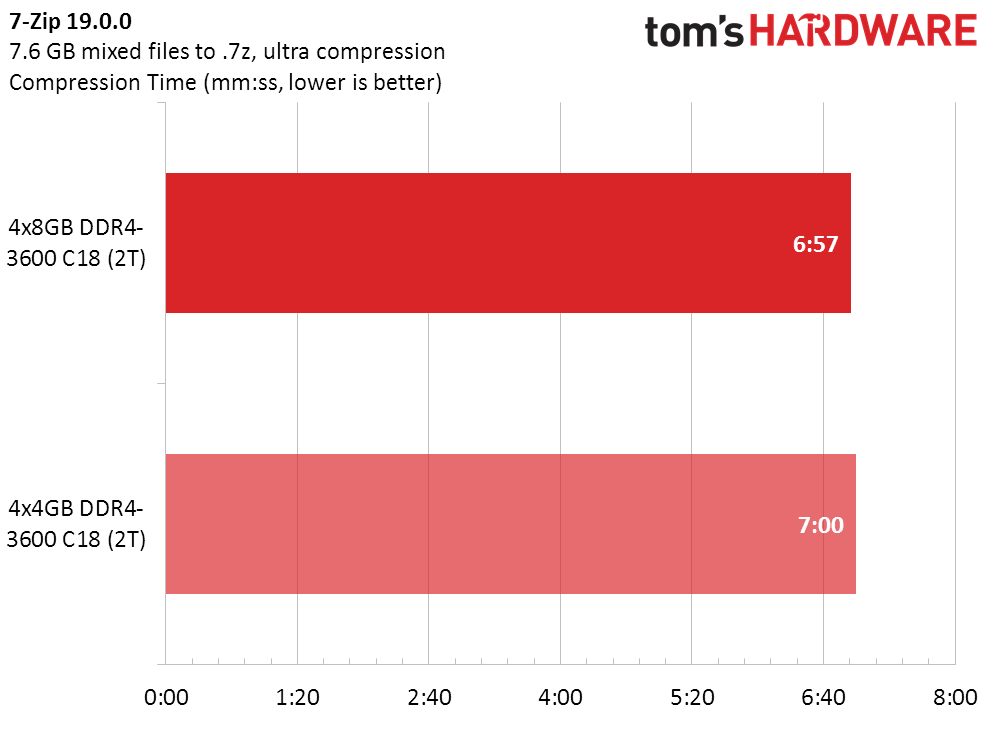
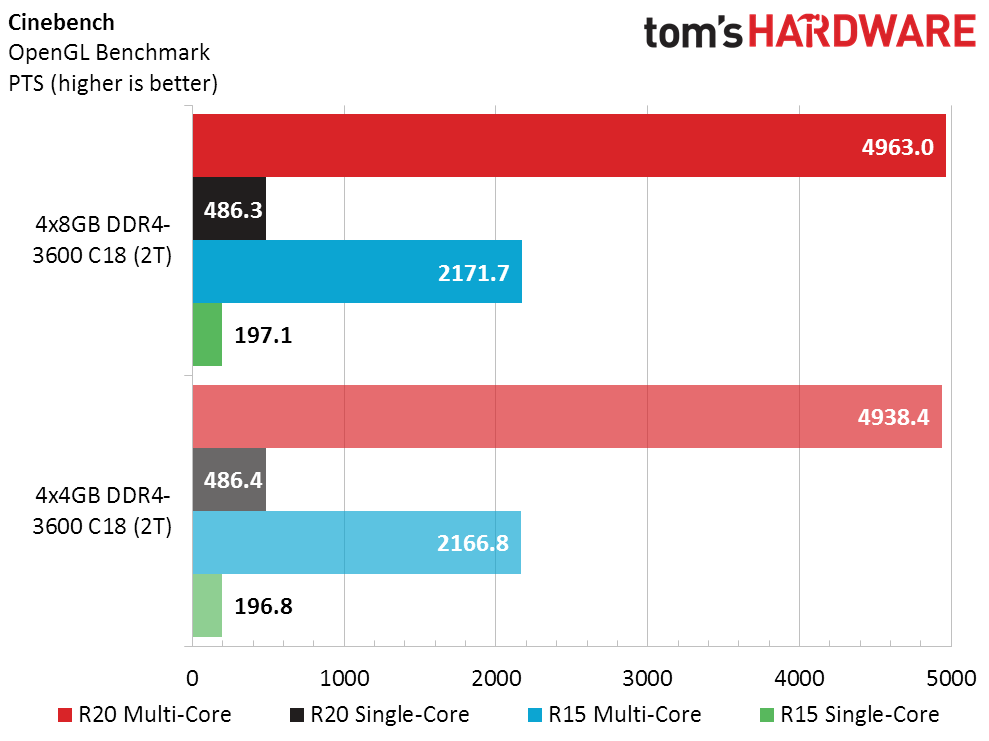
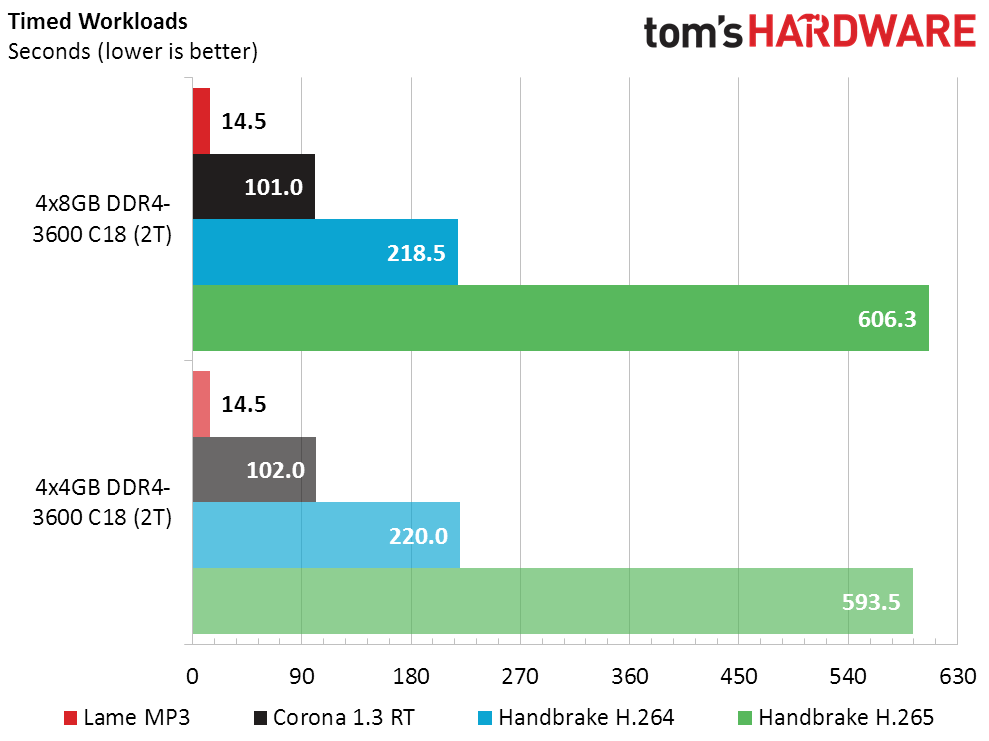
Amazingly, 16GB outperformed 32GB when frequency, timings, and the organization of ICs on the circuit board are constant. While we could guess that the memory controller is able to address the lower-capacity ICs more quickly, the more important point was to prove that our benchmarks don’t benefit from having more than 16GB of total capacity.
Benchmarks that typically benefit the most from increased data rates or decreased latencies show less favoritism for the smaller kit. None of our benchmarks are designed for 32GB, and our recommendations for that capacity have primarily focused on multitasking rather than benchmark data.
MORE: Best Memory
MORE: DDR DRAM FAQs And Troubleshooting Guide
MORE: All Memory Content
Get Tom's Hardware's best news and in-depth reviews, straight to your inbox.
-
NightHawkRMX So another test I want to see with ryzen 3000, faster speed ram with loose timings, or slower speed ram with tight timings.Reply -
Soaptrail So we should get 4x8GB RAM for Ryzen? I see on the reviews for Ryzen 3, the official support for 4 dimms at dual rank is only 2667. Can anyone confirm is it easy or hard to buy 4x8GB of dual rank and use it at 3600? i will do it but if it is a lottery of working or not I want to know.Reply
I have been building PC's for years but I never really got into overclocking other than XMP profiles. So i am willing to do this if it is easy enough to succeed. Thanks to anyone who helps explain this to me. I enjoyed this article but it was not as noob friendly as I needed. -
NightHawkRMX Ryzen is dual channel only.Reply
Just get 2x16gb and it will be more compatable and have better performance. -
salgado18 Reply
Care to show the tests to support your claim that 2x16 is faster than 4x8? Because the article you're replying to did just that, and proved the opposite.remixislandmusic said:Ryzen is dual channel only.
Just get 2x16gb and it will be more compatable and have better performance. -
NightHawkRMX Traditionally when running 4 sticks in 2 channels, you are usually forcing the command rate to 2T rather than 1T, making the ram latency worse.Reply
Heres what the article says:
"Command rate is the number of cycles a command must be presented before a memory operation commences, so that 2T incurs an additional cycle of latency to every memory access. It makes sense that most people would shoot for 1T, except that higher data rates often make this unworkable, particularly when more ranks of memory are used (ie, two “double-sided” or four “single-sided” DIMMs). The reason that we’ve used only half of our four-DIMM kit thus far is that it won’t run all four DIMMs at DDR4-3600 and 1T, hence you’ll want to see the penalty of 2T before we add four-DIMM configurations to the mix."
I see no way for 4 sticks to be faster as they have no more bandwidth than 2 sticks. If you look at the far right 2, you see the performance is roughly the same, which is very surprising. I have seen 4x8gb would have less compatability with ryzen in the past, but not sure of now.
-
CheckDM Hmm. This throws a curveball in my upcoming build, because I already want 32GB.Reply
I was simply going to go 2x16 with "Corsair Vengeance LPX 32GB (2x16GB) DDR4 DRAM 3200MHz C16" (CMK32GX4M2B3200C16) for $155.
But now I'm thinking I should go with a 4x8G with "CORSAIR Vengeance LPX 16GB (2 x 8GB) DDR4 3200" (CMK16GX4M2B3200C16) for a total of $140.
The 4x8 config is a little cheaper, and according to this article using 4 sockets is possibly better.
(However, the QVL sheet for my chosen motherboard, Gigabyte X570 Auros Elite, supports the 2x16 but the ram selected for 4x8 is only supported in 2x8. So this might be the overriding factor.) -
Z1NONLY 4 single rank sticks allow the controller to interleave the ram, making it faster than two single rank sticks. I have experienced this in my own 3800x build. Both time spy physics and shadow of the tombraider did better with 4 sticks of ram.Reply
As the article points out, with 4 sticks an operation can start on one rank while another has not yet finished on the other...and this is on each of the channels.
My TS physics score was ~10300 with two sticks and ~10700 with four. -
NightHawkRMX Reply
That makes sense.Z1NONLY said:4 single rank sticks allow the controller to interleave the ram, making it faster than two single rank sticks. I have experienced this in my own 3800x build. Both time spy physics and shadow of the tombraider did better with 4 sticks of ram.
As the article points out, with 4 sticks an operation can start on one rank while another has not yet finished on the other...and this is on each of the channels.
My TS physics score was ~10300 with two sticks and ~10700 with four. -
Crashman Reply
You should get four ranks of 8GB. The article says it doesn't matter if it's four single-rank or two dual-rank DIMMs.Soaptrail said:So we should get 4x8GB RAM for Ryzen? I see on the reviews for Ryzen 3, the official support for 4 dimms at dual rank is only 2667. Can anyone confirm is it easy or hard to buy 4x8GB of dual rank and use it at 3600? i will do it but if it is a lottery of working or not I want to know.
I have been building PC's for years but I never really got into overclocking other than XMP profiles. So i am willing to do this if it is easy enough to succeed. Thanks to anyone who helps explain this to me. I enjoyed this article but it was not as noob friendly as I needed.
Maybe I should repeat the above statement from the article body in its conclusion ;)CheckDM said:Hmm. This throws a curveball in my upcoming build, because I already want 32GB.
I was simply going to go 2x16 with "Corsair Vengeance LPX 32GB (2x16GB) DDR4 DRAM 3200MHz C16" (CMK32GX4M2B3200C16) for $155.
But now I'm thinking I should go with a 4x8G with "CORSAIR Vengeance LPX 16GB (2 x 8GB) DDR4 3200" (CMK16GX4M2B3200C16) for a total of $140.
The 4x8 config is a little cheaper, and according to this article using 4 sockets is possibly better.
(However, the QVL sheet for my chosen motherboard, Gigabyte X570 Auros Elite, supports the 2x16 but the ram selected for 4x8 is only supported in 2x8. So this might be the overriding factor.)
